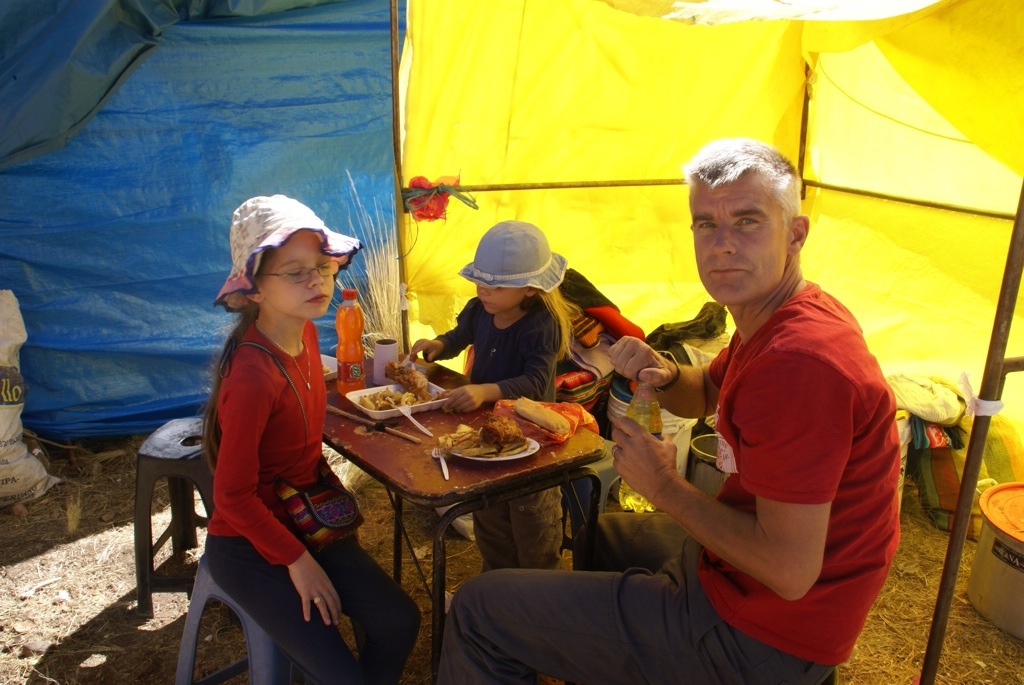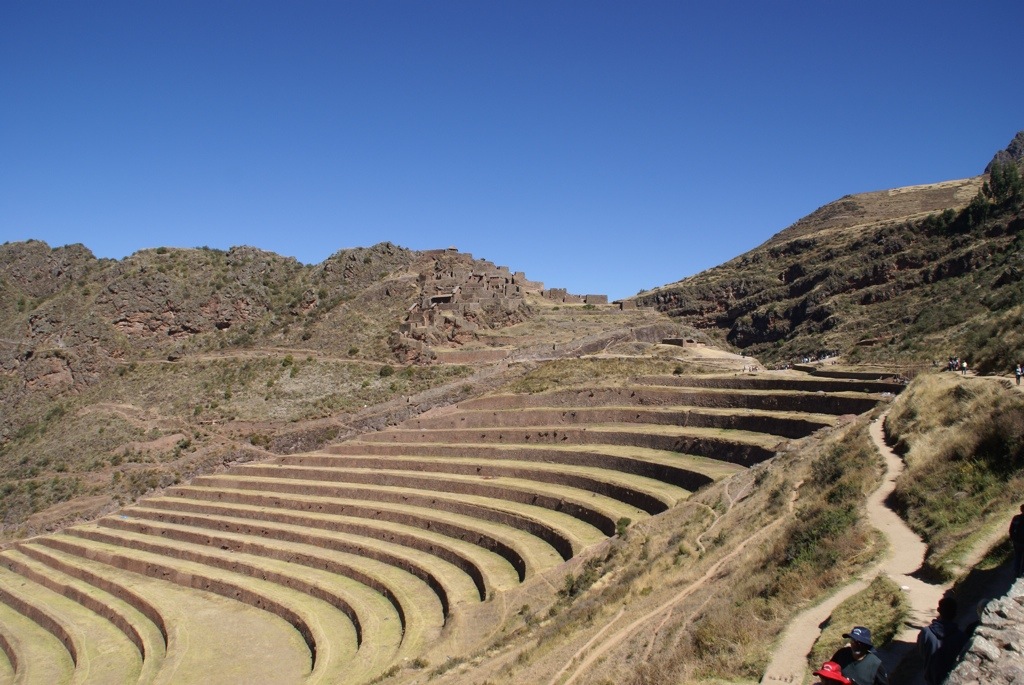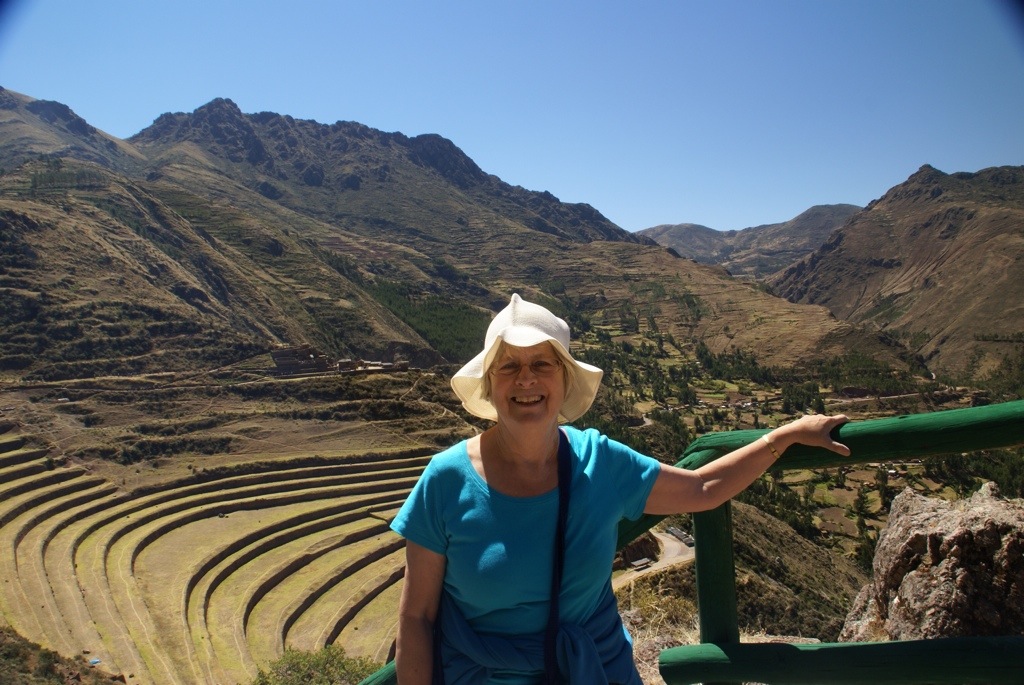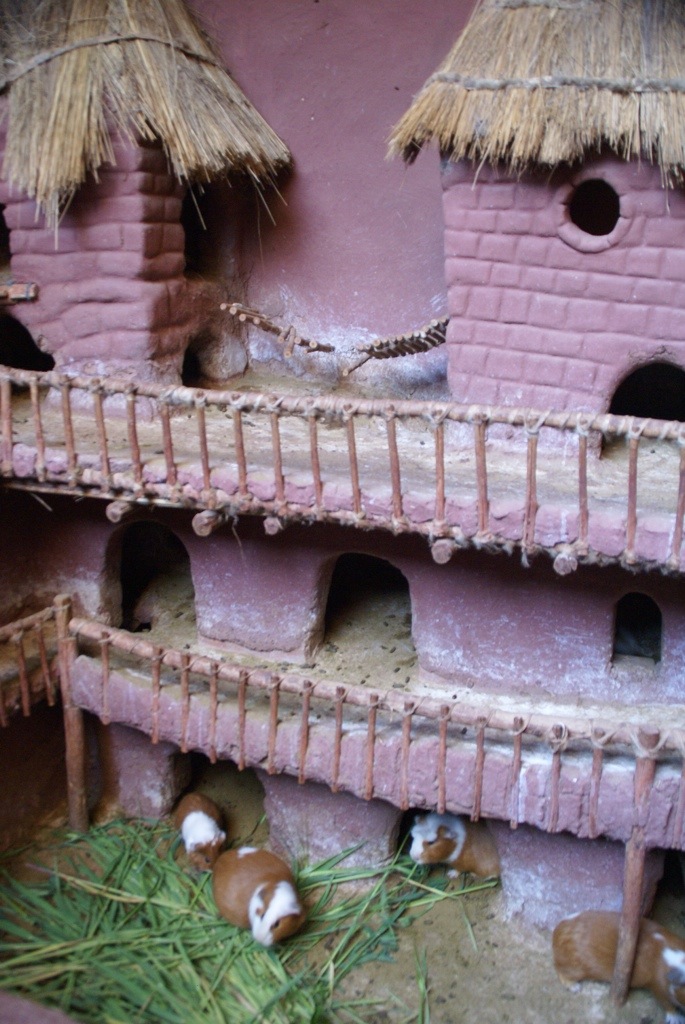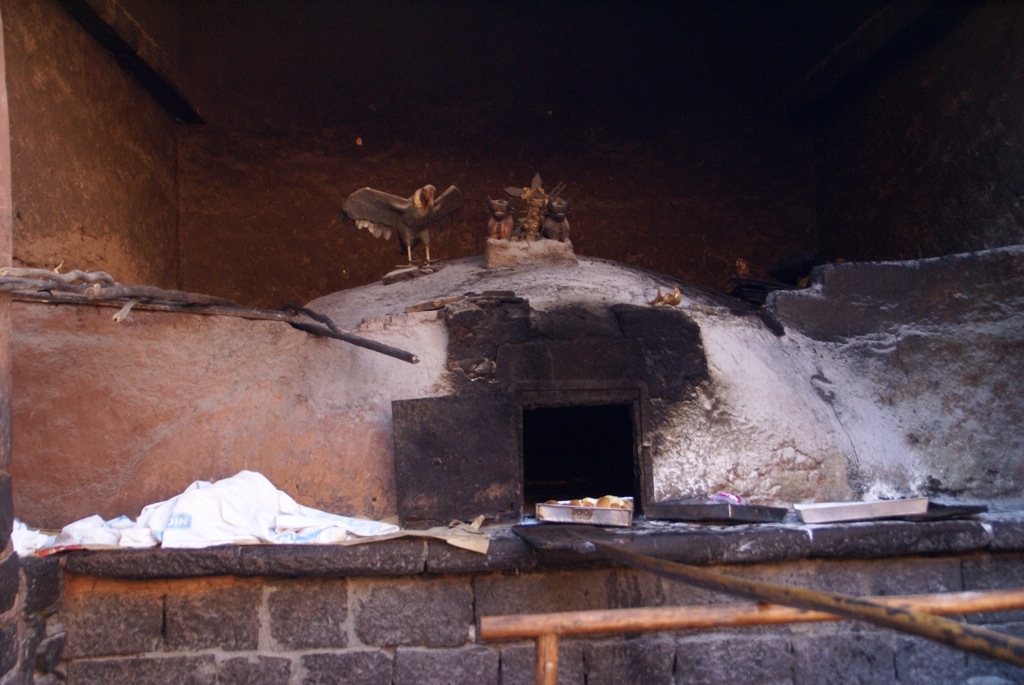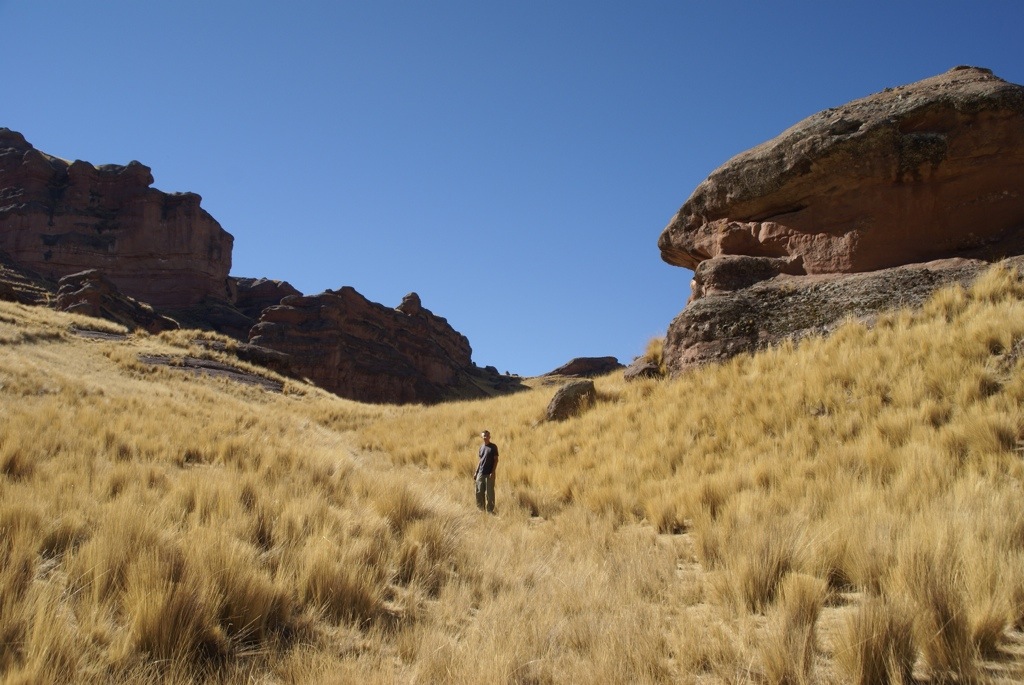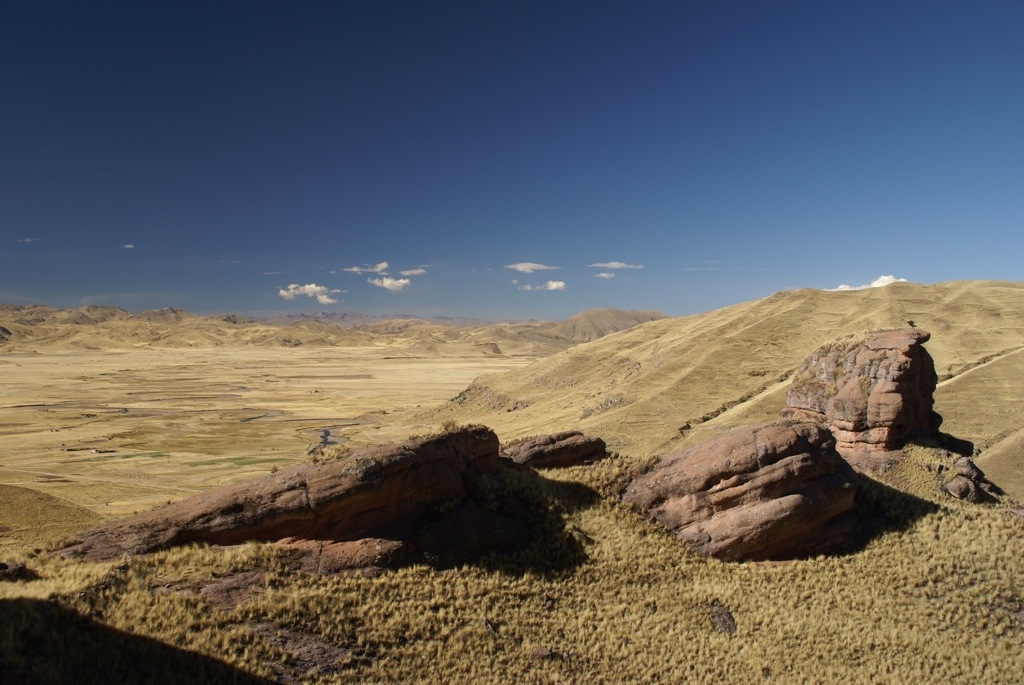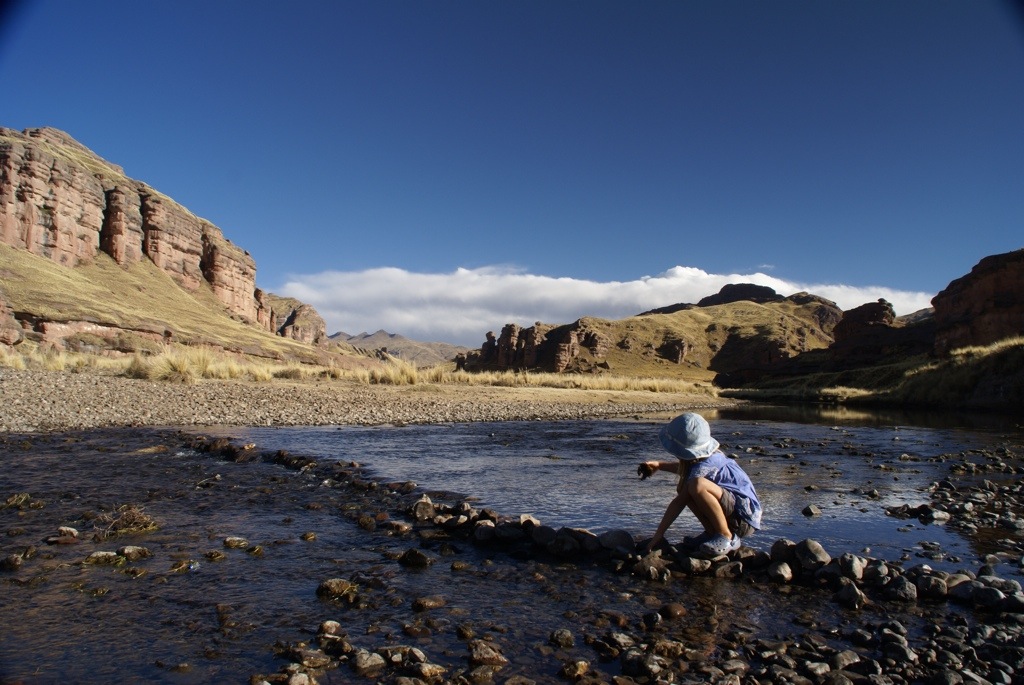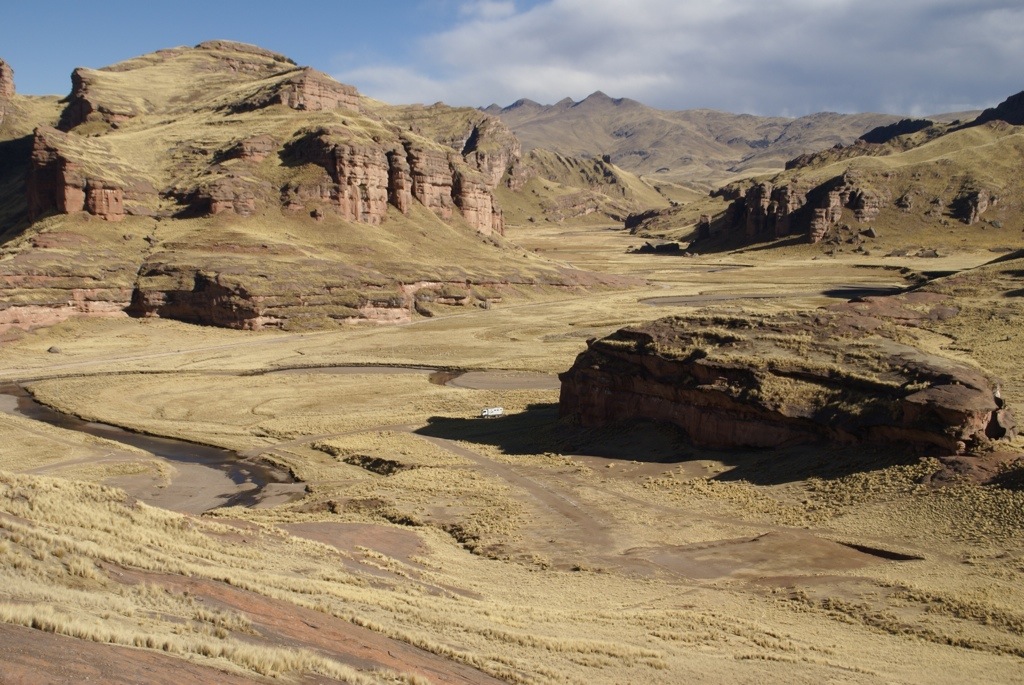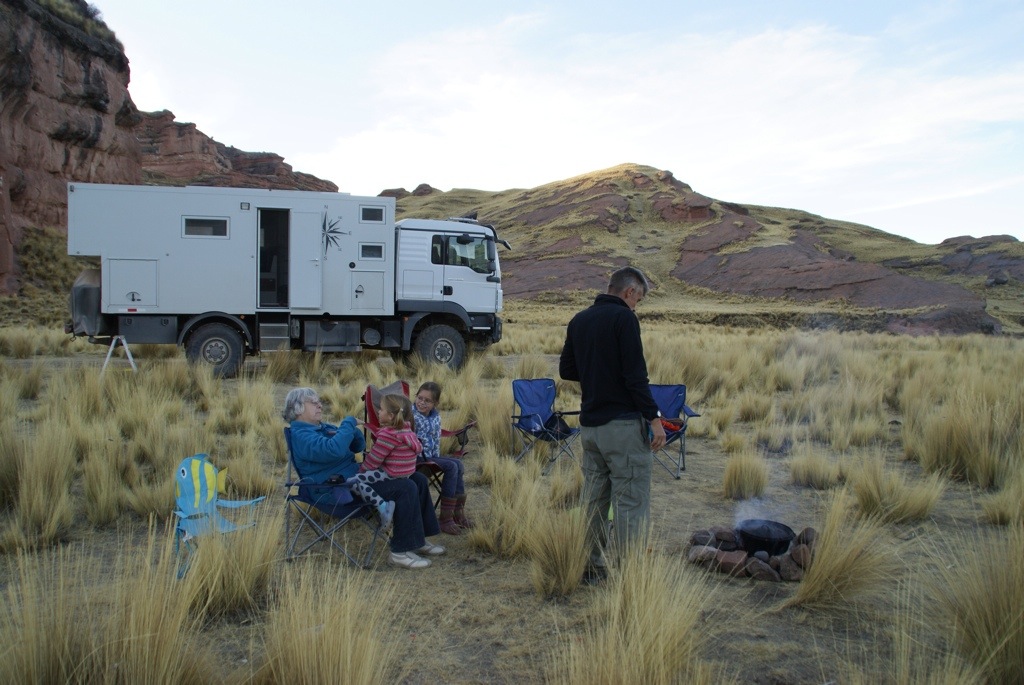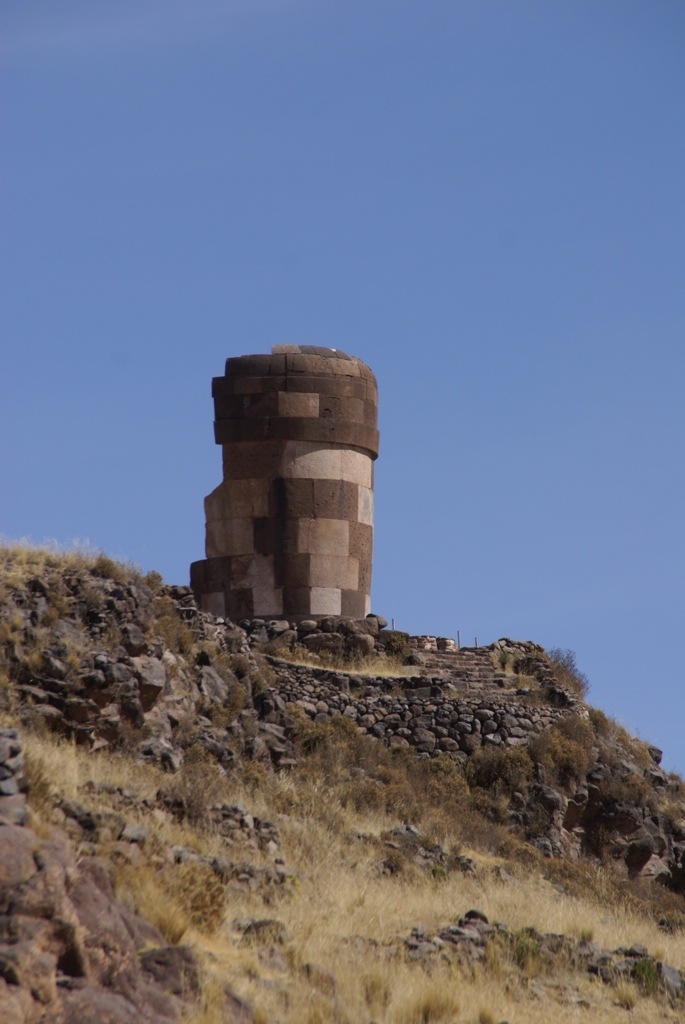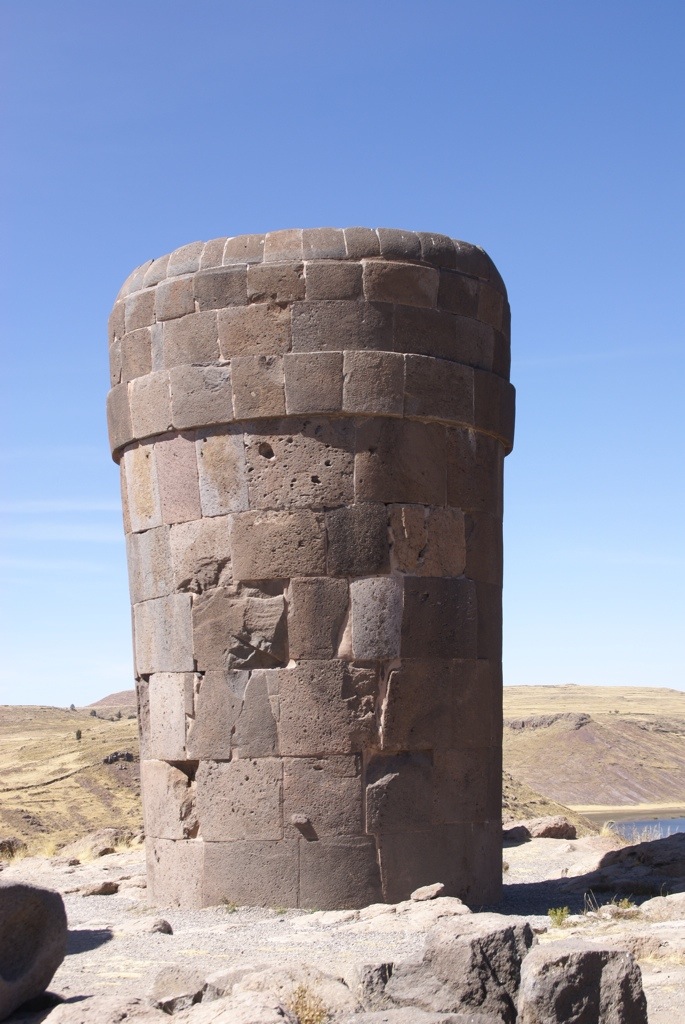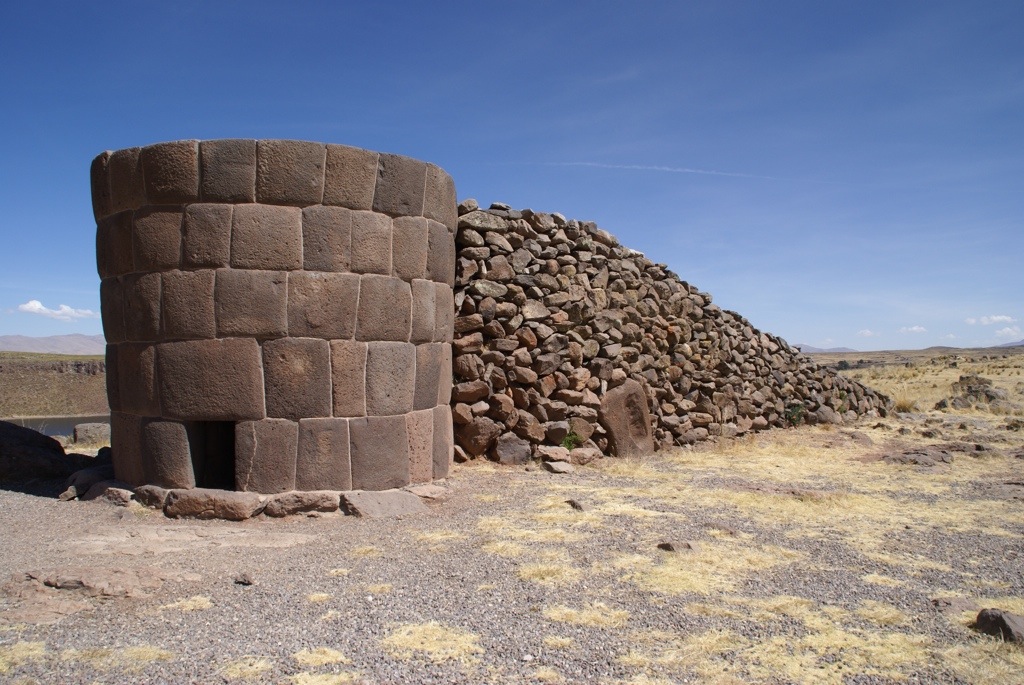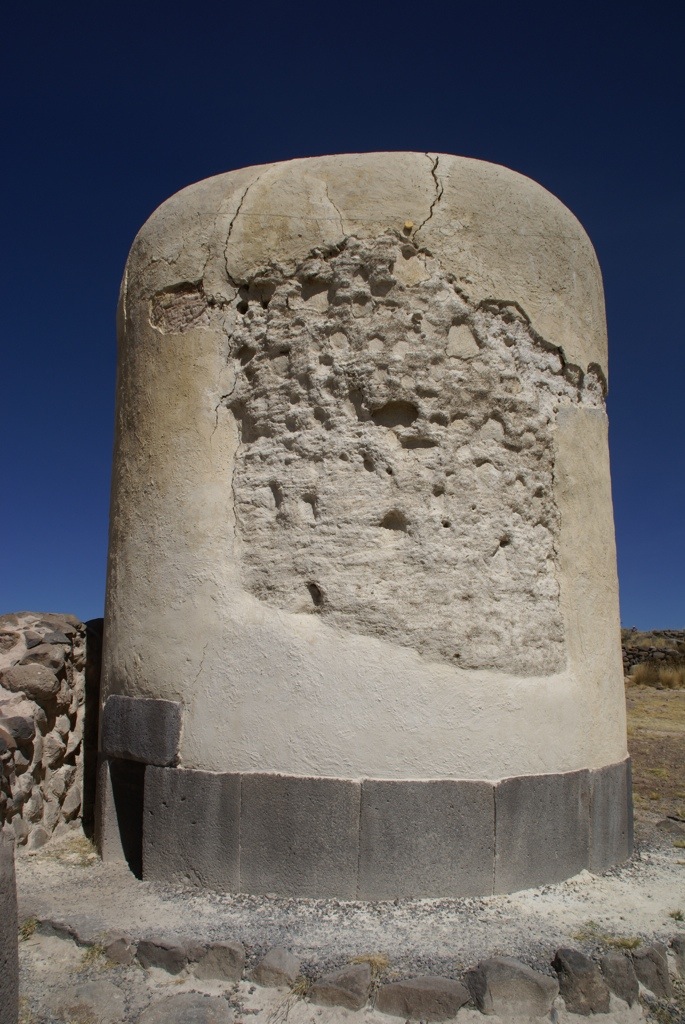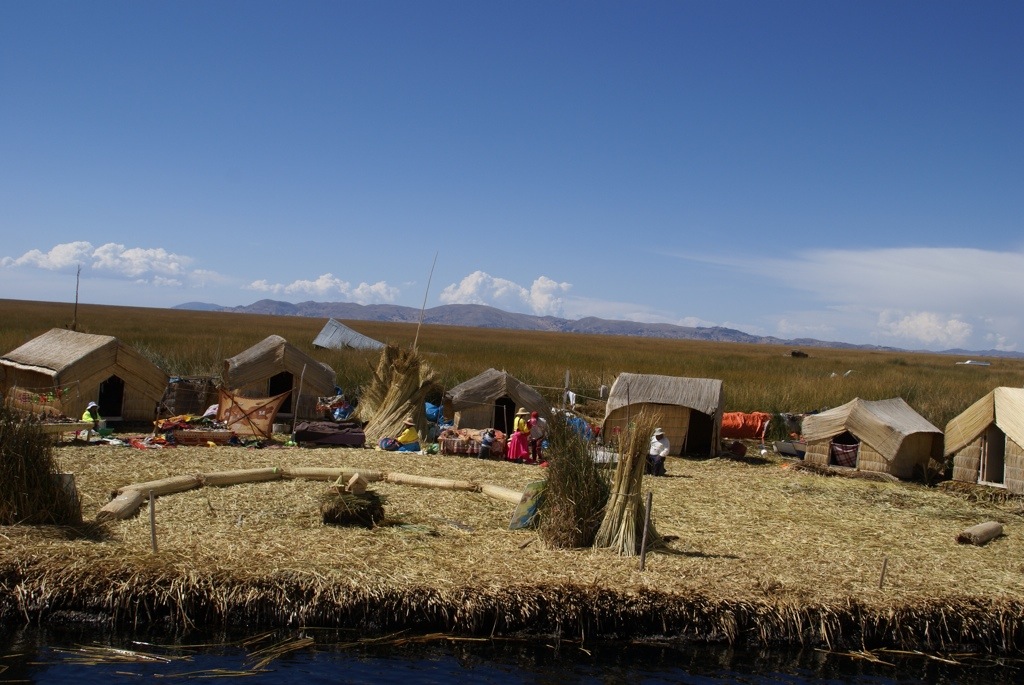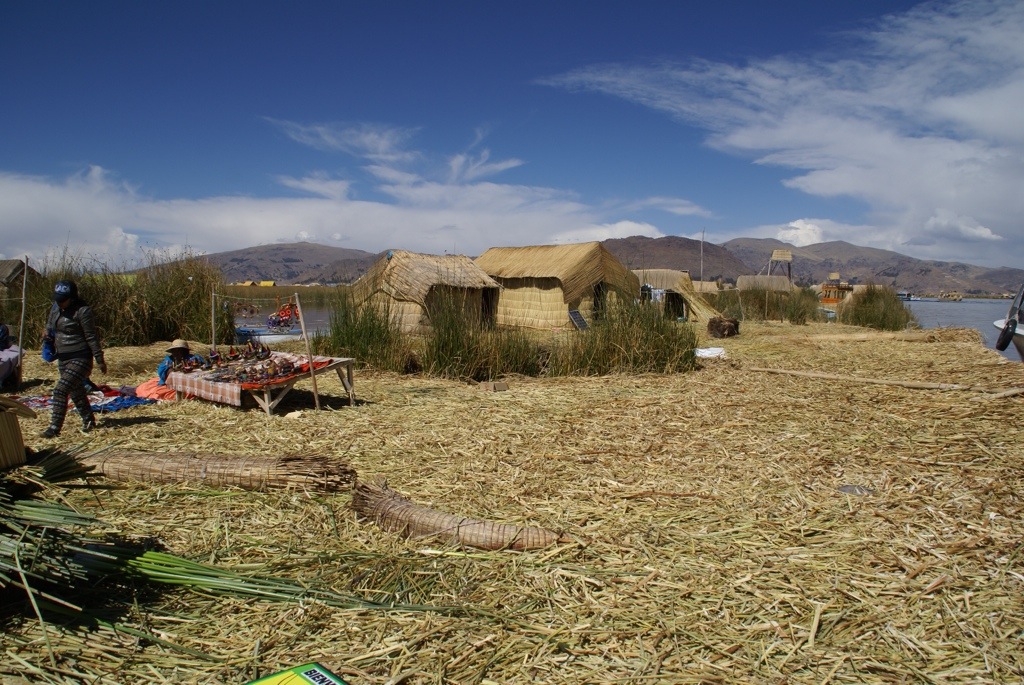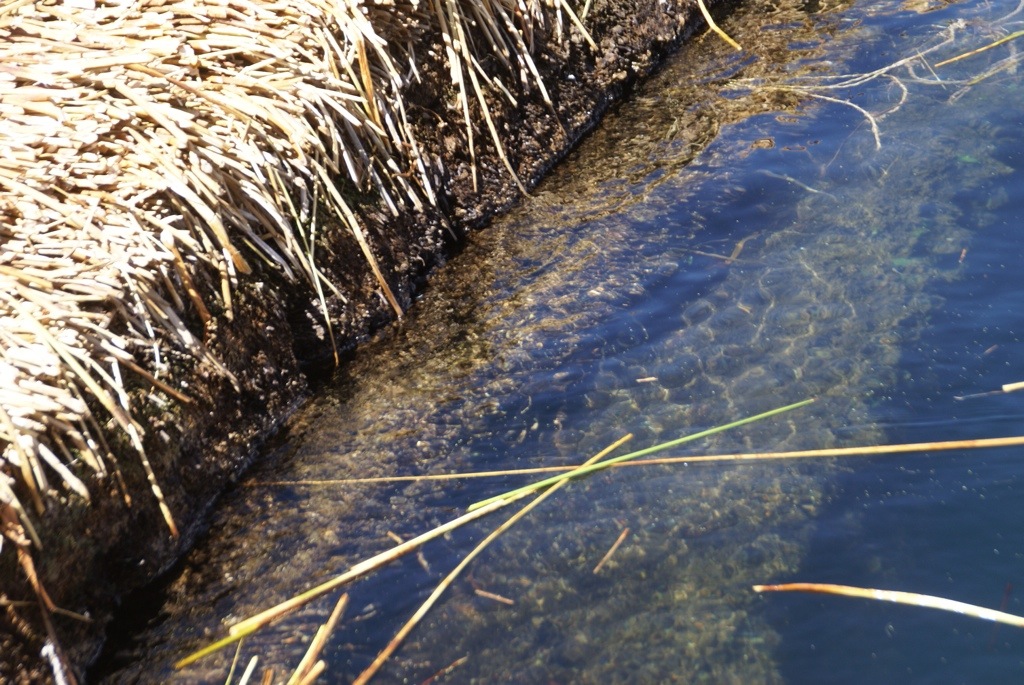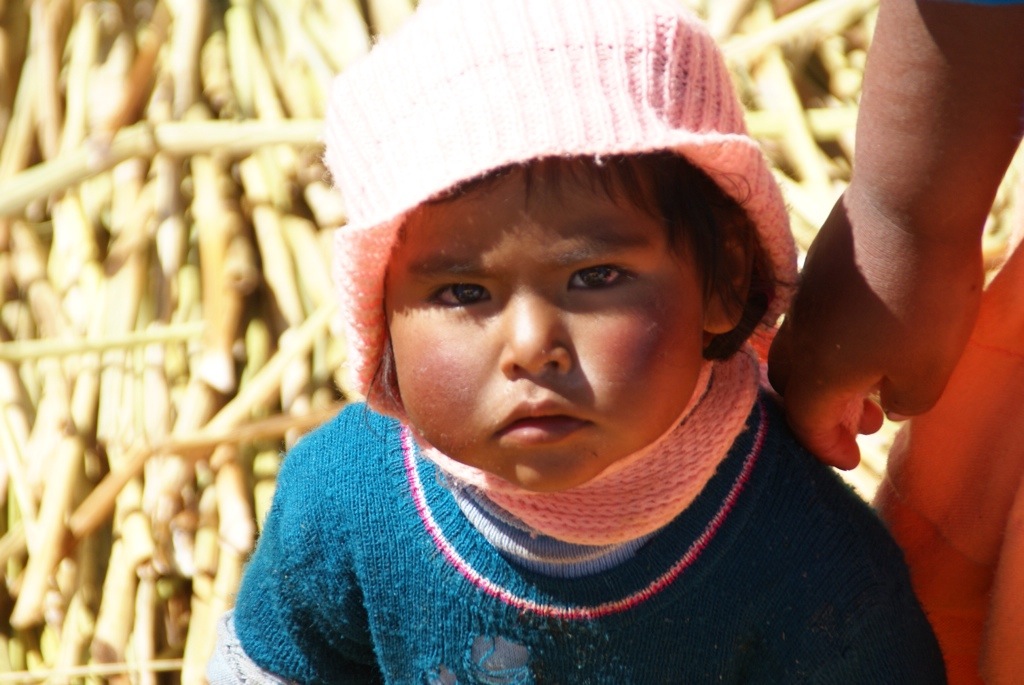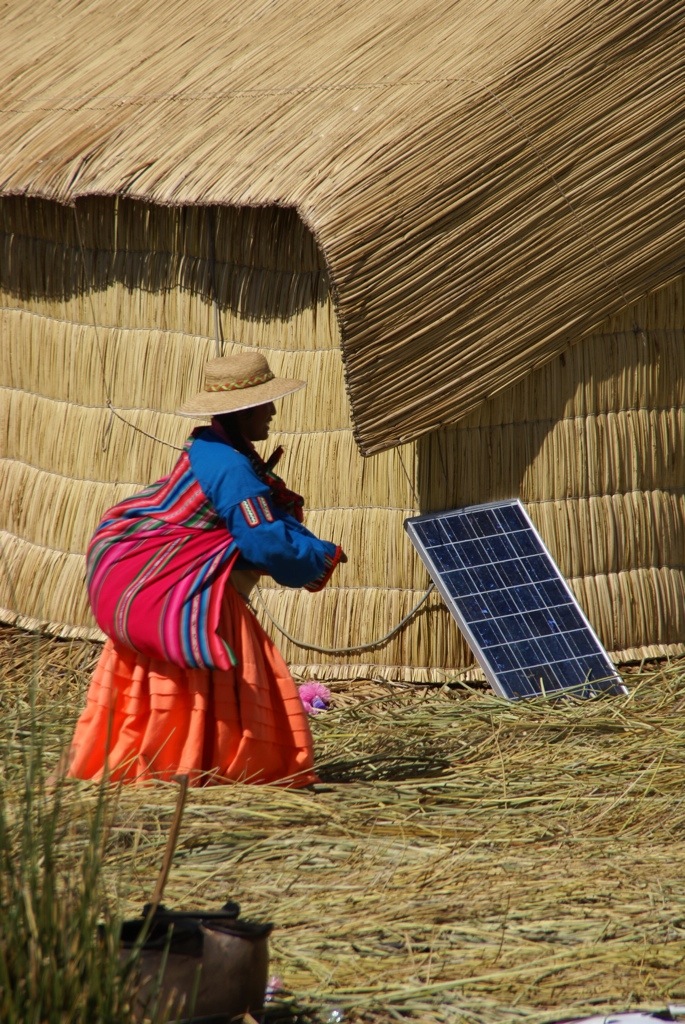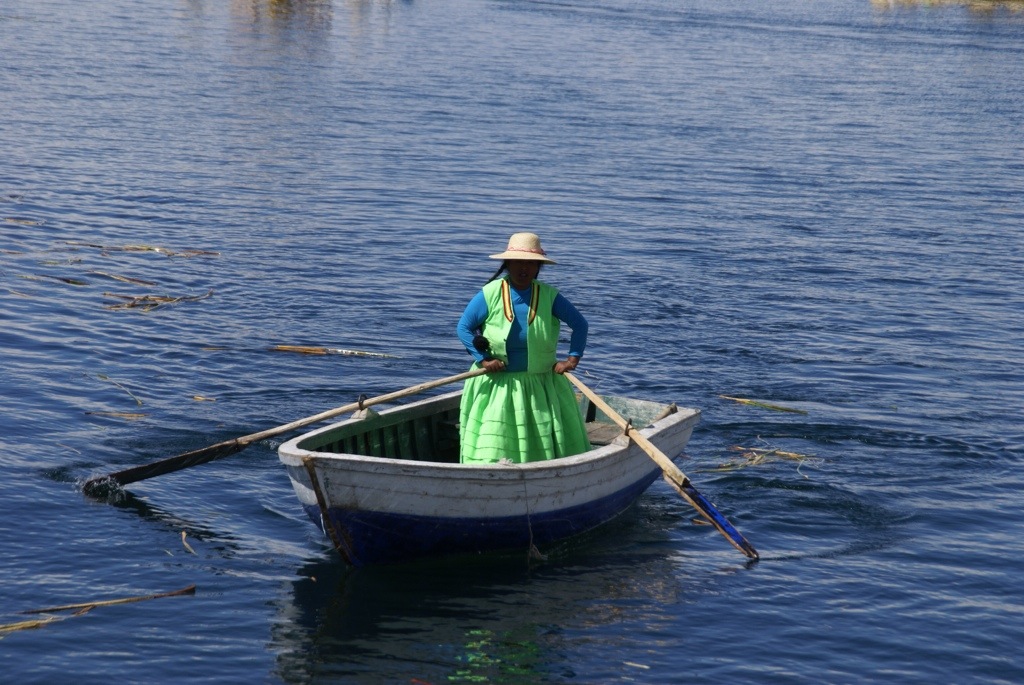Whilst in Cusco we stayed at a campsite just above the city. This is a regular overlanders meeting point and is a pleasant place to stay. When we arrived there were already 10 other overland vehicles staying some of whom we had met before. I think this is the busiest site we have stayed at so far onthe trip, fortunately there was still enough space for us to park up.
After meeting up with Margaret, Gilly's mum we had two and a half days to explore Cusco. Cusco is the former Inca capital. Following its capture by the Spanish it was largely destroyed and an ornate colonial city was built in its place. Often the new colonial buildings were built on top of Inca ones so some of the original Inca stonework is still in place. Whilst it is undoubtedly a tourist city it is still very beautiful and a lovely place just to stroll around.
We started in the Plaza de Armas which is surrounded on one side by the cathedral and on the other by another church. After ambling around the quaint streets we went out for a lovely dinner, introducing Margaret to the delights of grilled Alpaca.
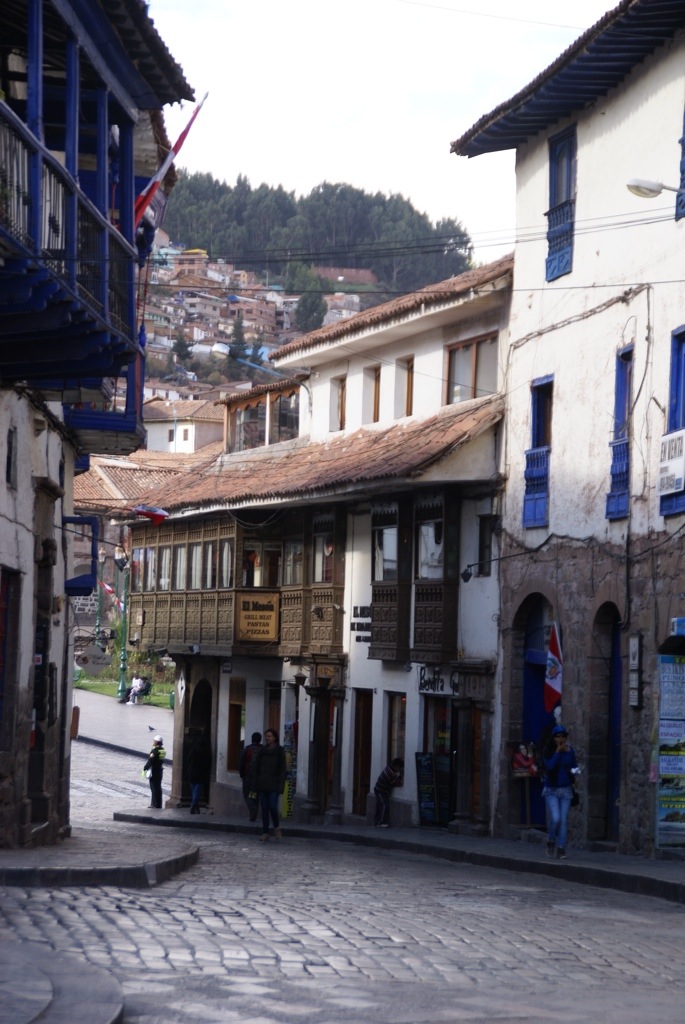

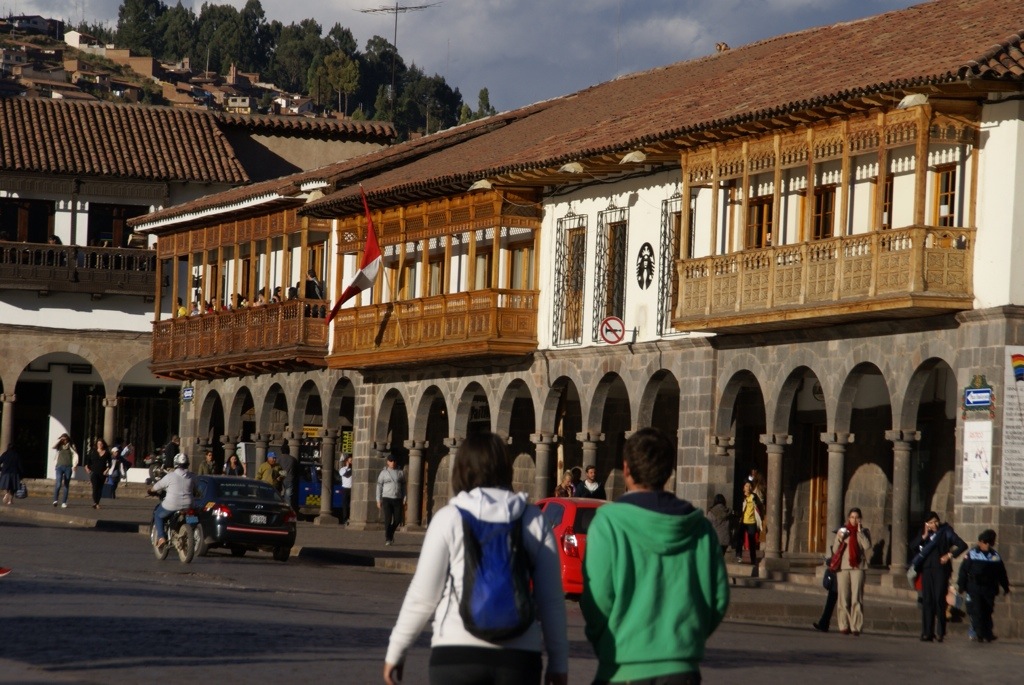
Over the course of the next few days we visited a number of the important sights. First up was Qorikancha, where Inca ruins form the base of a Dominican convent.
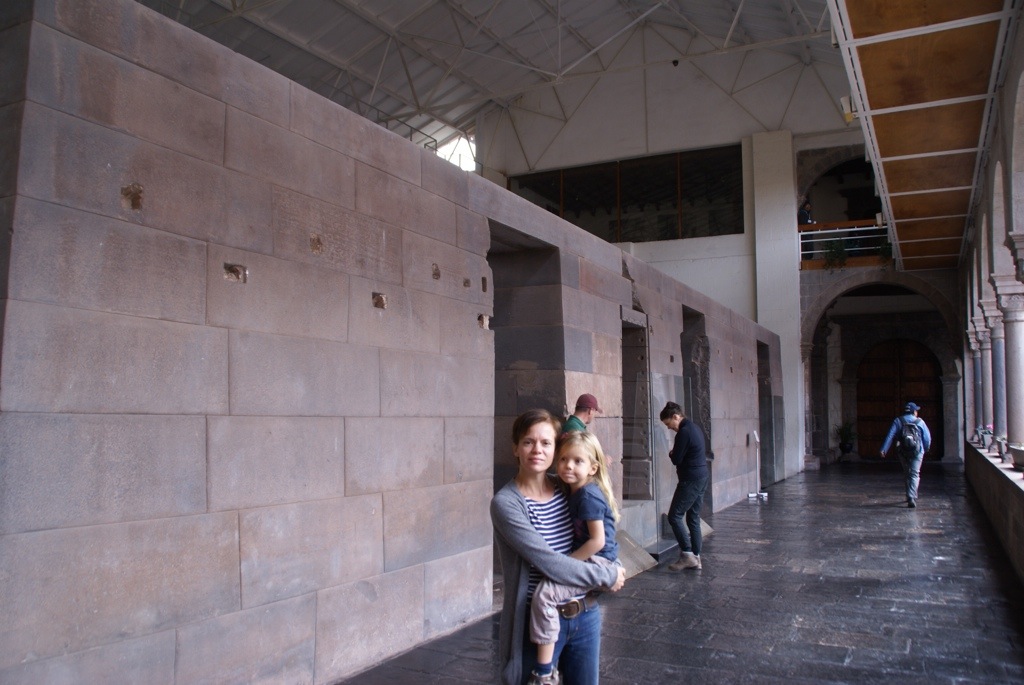


We also visited Sacsaywaman, the Inca fortress that sits above the city and handily very near to our campsite. Cusco was designed in the shape of a Puma by the Incas and Sacsaywaman was its head. It had a series of zigzagged walls which represented the teeth of the puma. Alisha wanted to dress up as an Incan princess while we wandered around and as she had just finished making herself a dress felt this was the place to show it off.
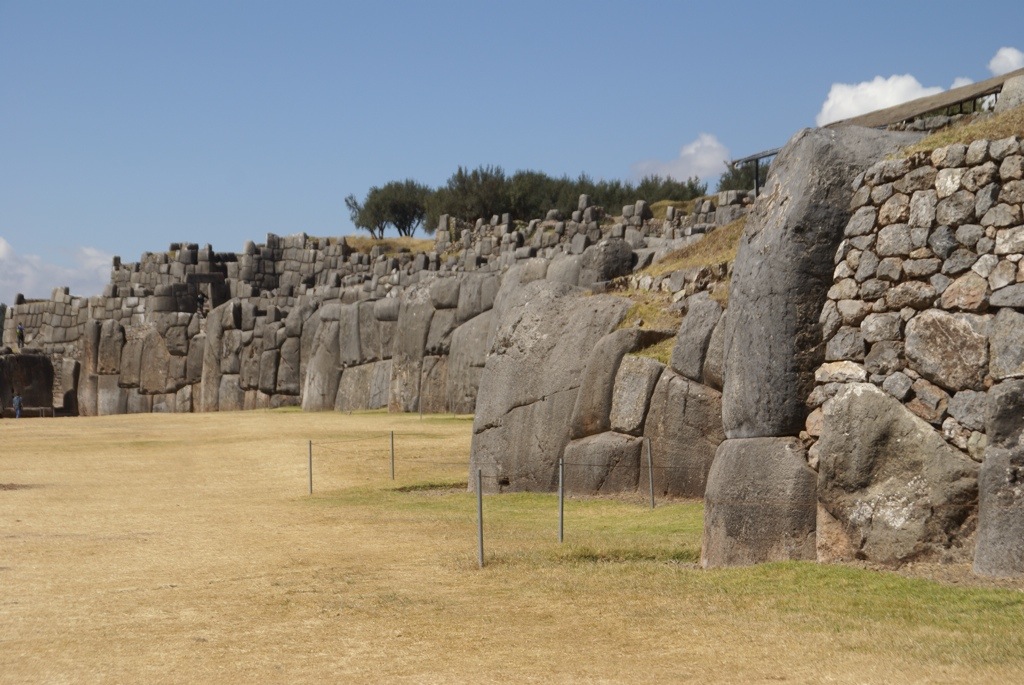
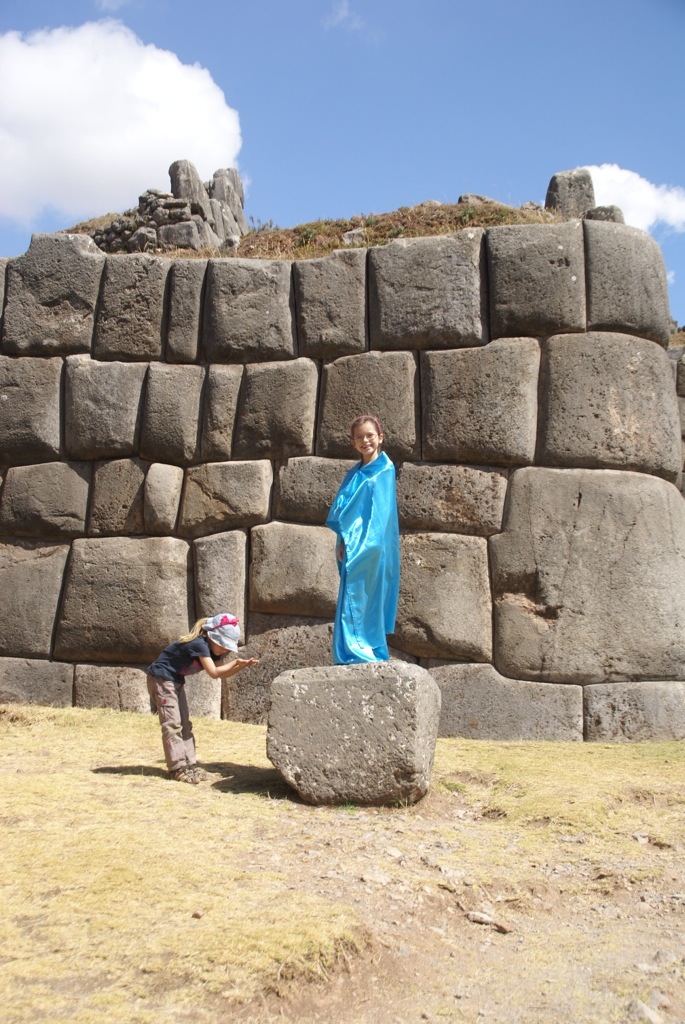
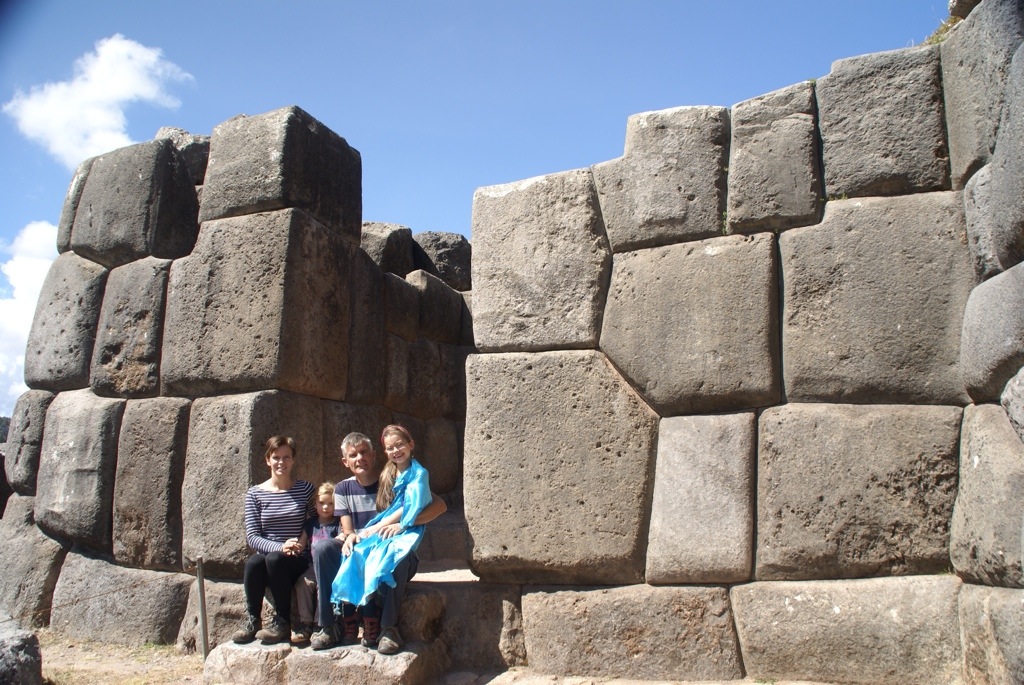
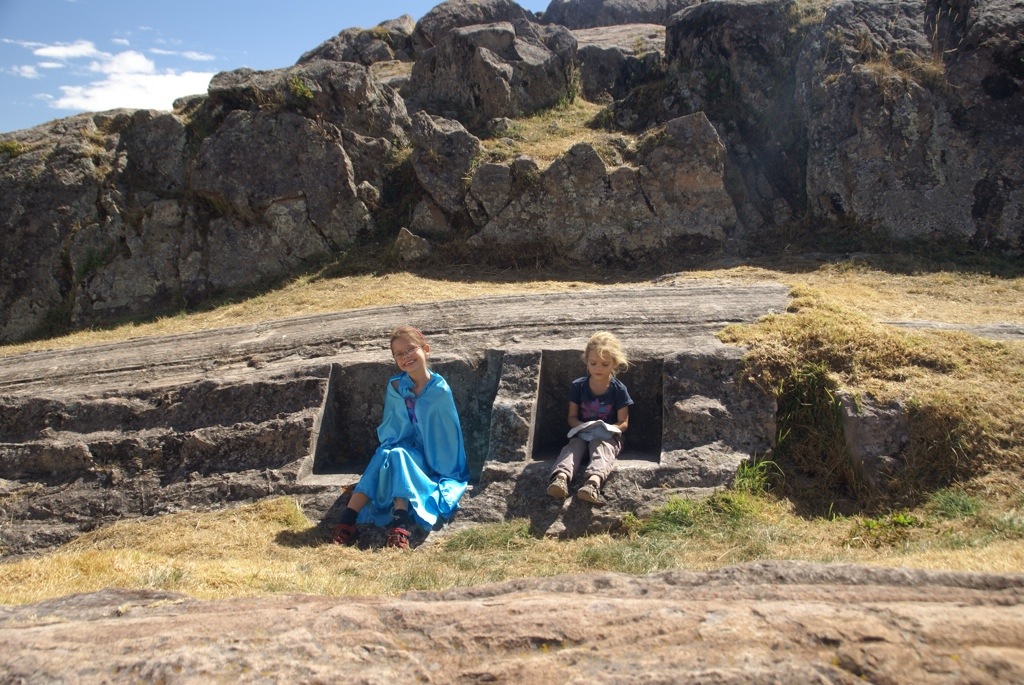
Also while we were in Cusco it was the World Cup semi finals. As we were in a town it meant I could finally get to watch some of the football. For the first game I went to an English pub, the Cross Keys and watched Germany annihilate Brazil while enjoying a couple of pints of Old Speckled Hen (English Bitter). The next day was slightly more upmarket as I headed to the Pisco Museum for Pisco Cocktails to watch the dreary Argentina v Holland game with a bunch of overlanders from the campsite. As many of these were German though they were still quite excited from the previous day.
Whilst I was watching the football the girls first went to see some local dancing at the cultural centre.
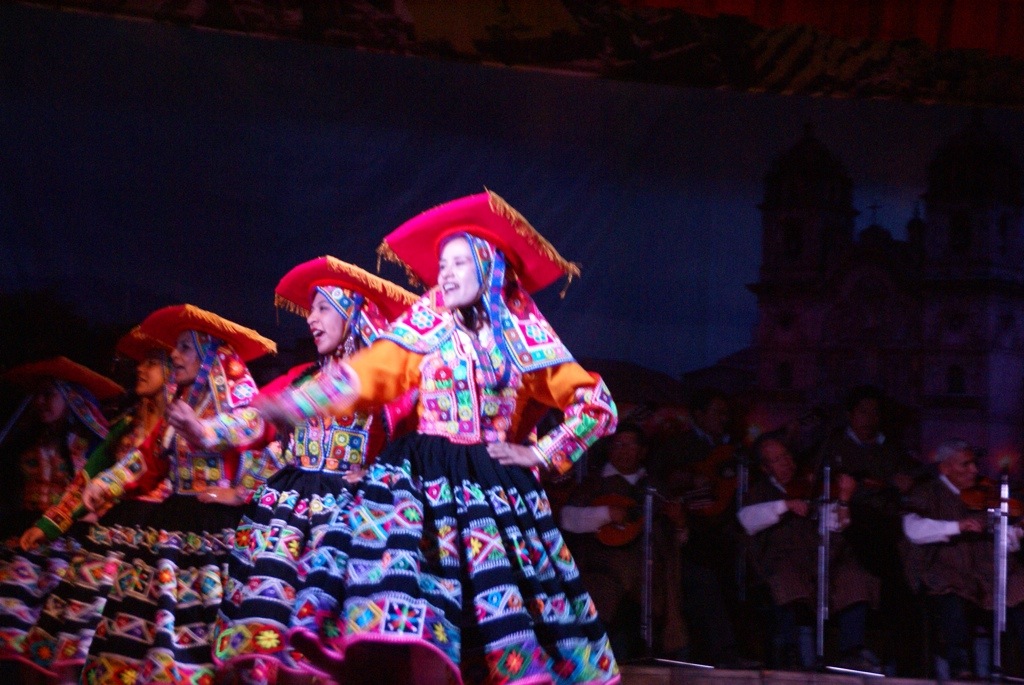
Then on the second day Granny treated the kids to another chocolate making course which as you can imagine went down very well with Alisha and Lucy.
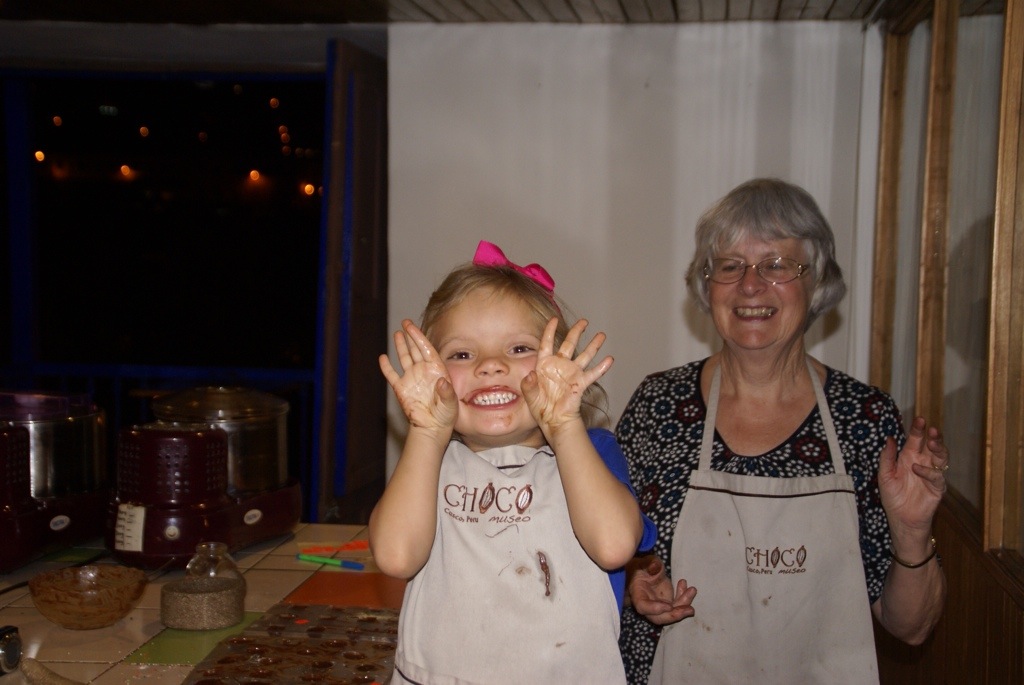
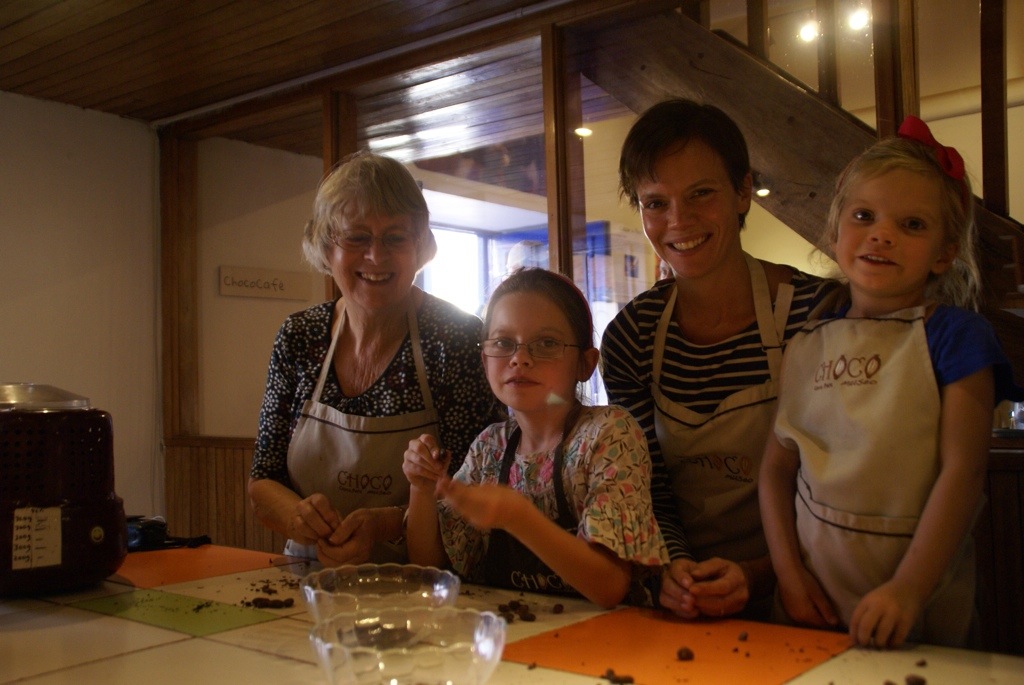
We thoroughly enjoyed our time in Cusco as it was a lovely city to wander around and despite all the tourists wished we could have stayed longer. It was also nice to escape to the peace of the campsite each evening and catch up with some fellow overlanders.
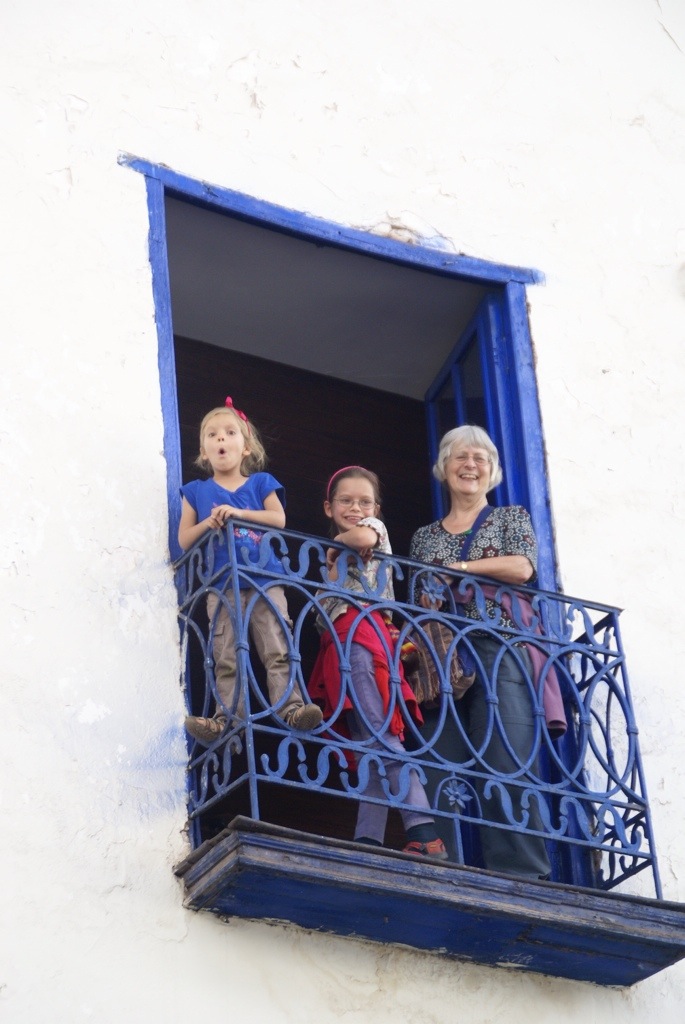
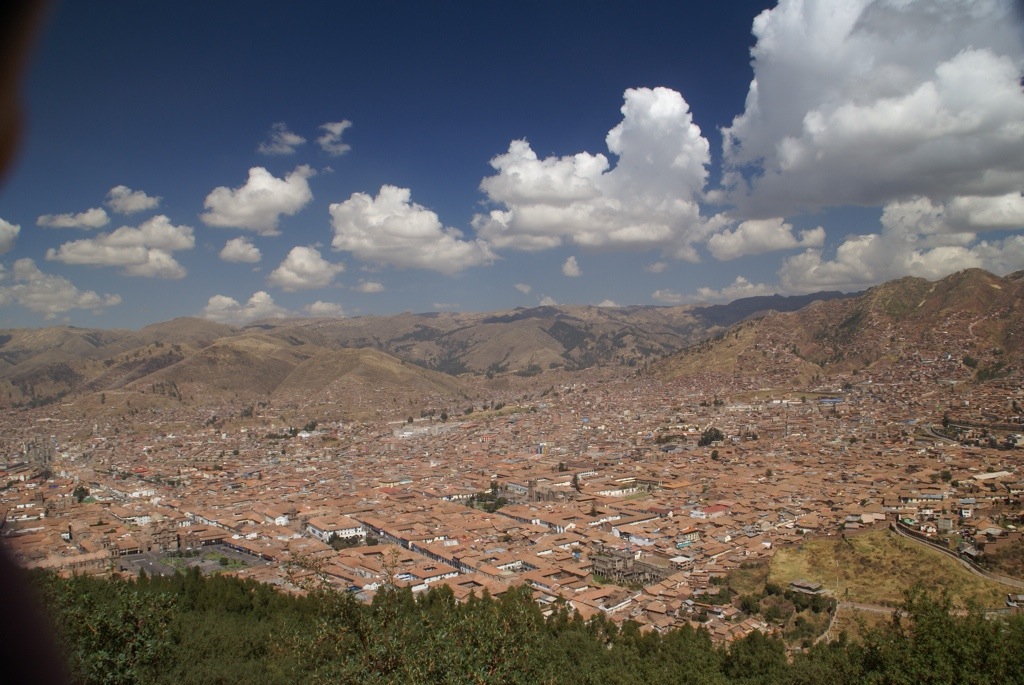
We left Cusco to head out into the Sacred Valley to see some more of the Incan ruins. The first stop was Salinas. Salinas is set in spectacular countryside of flowing barley and wheat fields with snow capped mountains as a backdrop. The site itself is hundreds of salt pans that date from Incan times but are still been used today to extract salt. They made for a fantastic sight.
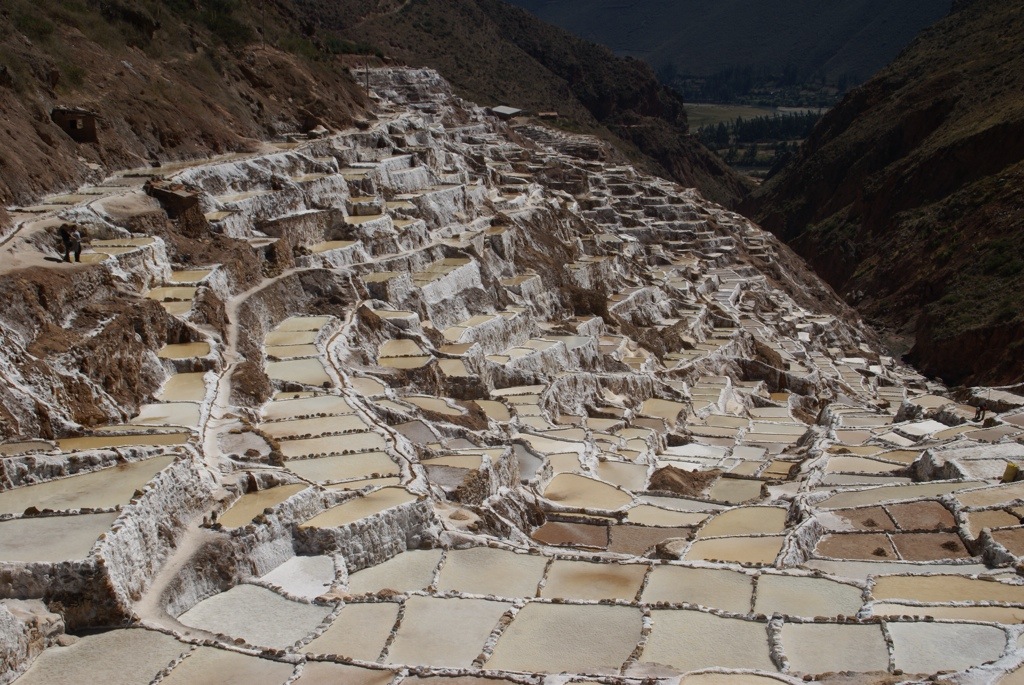
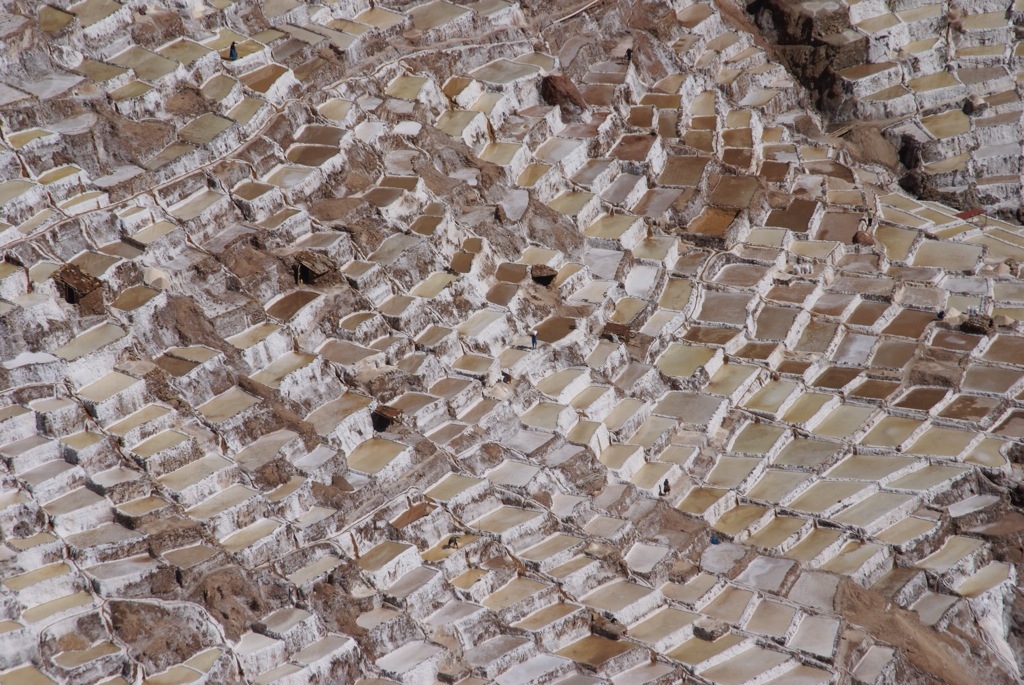
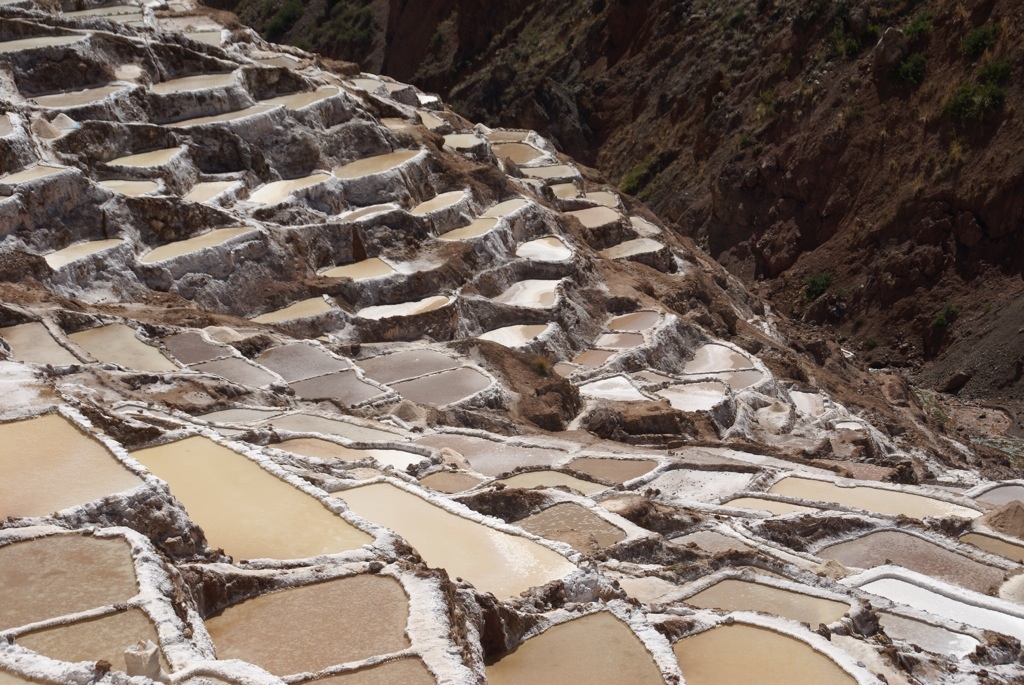
From Salinas we went to Moray. This site is a series of amphitheater terracing that was used for farming. Supposedly each layer had its own different micro climate and some people theorise it was used by the Incas to experiment with crop growing.

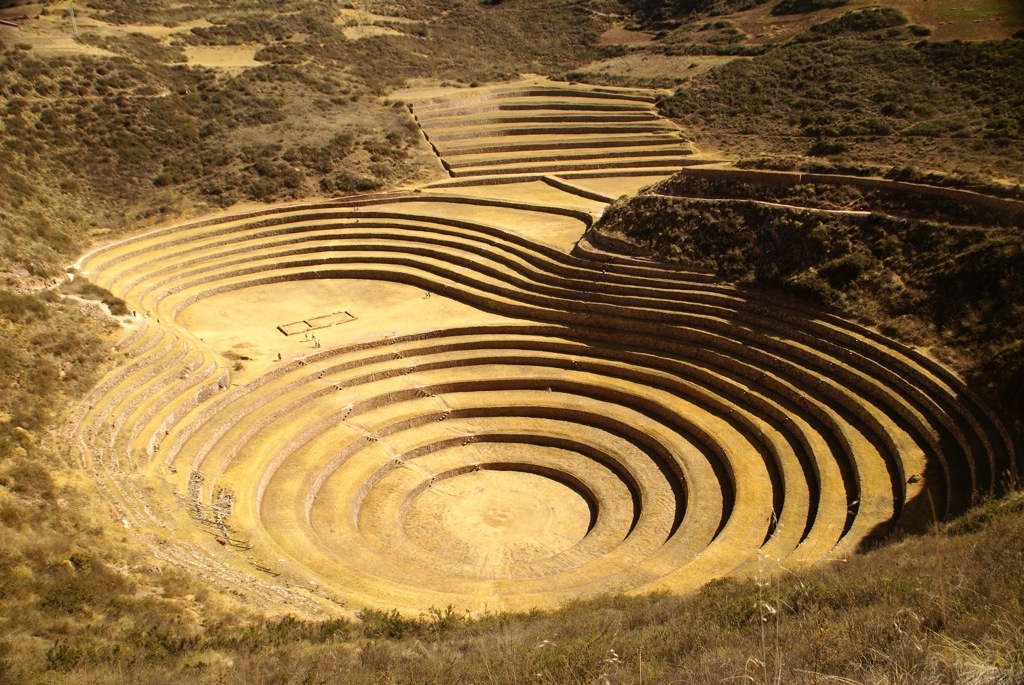
Rather than return through the town of Maras, which had very narrow streets, we decided to take the shorter route to Ollantaytambo. This proved to be a pretty adventurous route as there was a steep dirt road down the mountainside. Once we got down to the river there was no bridge to cross to get onto the main road. However there was a track down the side of the railway which people drove on so we followed that until we came to a bridge.
Ollantaytambo is a beautiful village with an impressive terraced Inca ruin overlooking the village. Unfortunately the village was not designed for driving and the narrow streets combined with all the tourist buses meant it was grid lock in parts. After squeezing through the town to our hoped for camp spot we found out the hotel no longer accepted campers. As we did not want to drive around the town we parked the truck at the station car park and Gilly and I set off on foot to try to find somewhere to stay. Eventually we found a parking lot where some of the buses parked and they were happy for us to park there for a few days. There was also a convenient hotel for Margaret nearby.
The next day we set out to explore the steep Inca terraces that tower over Ollantaytambo. It was a beautiful day and lovely wandering around the site.
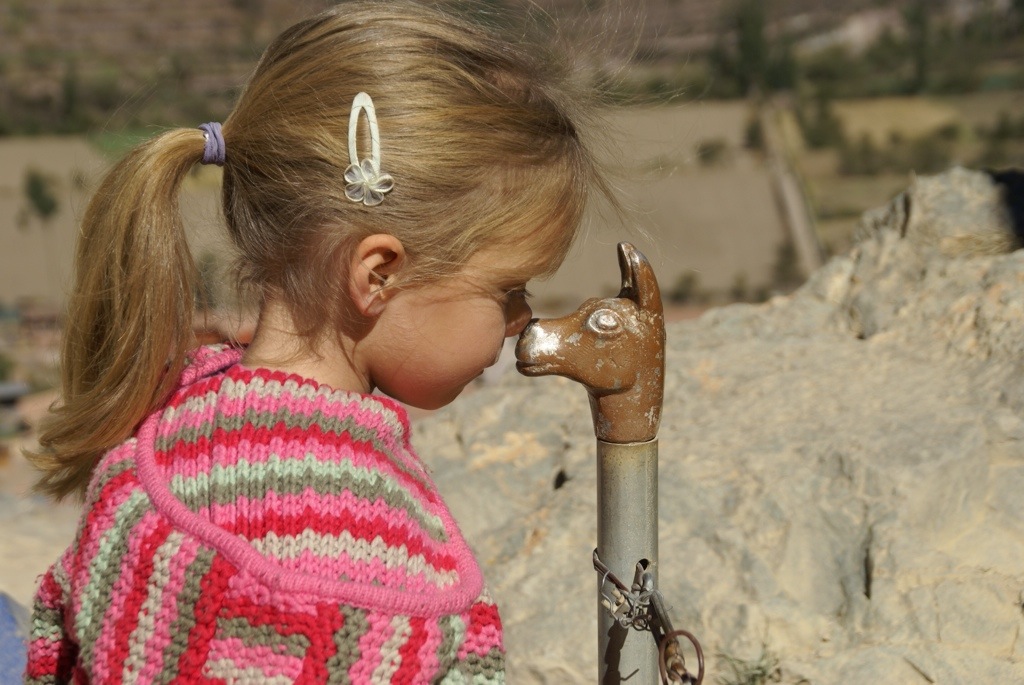

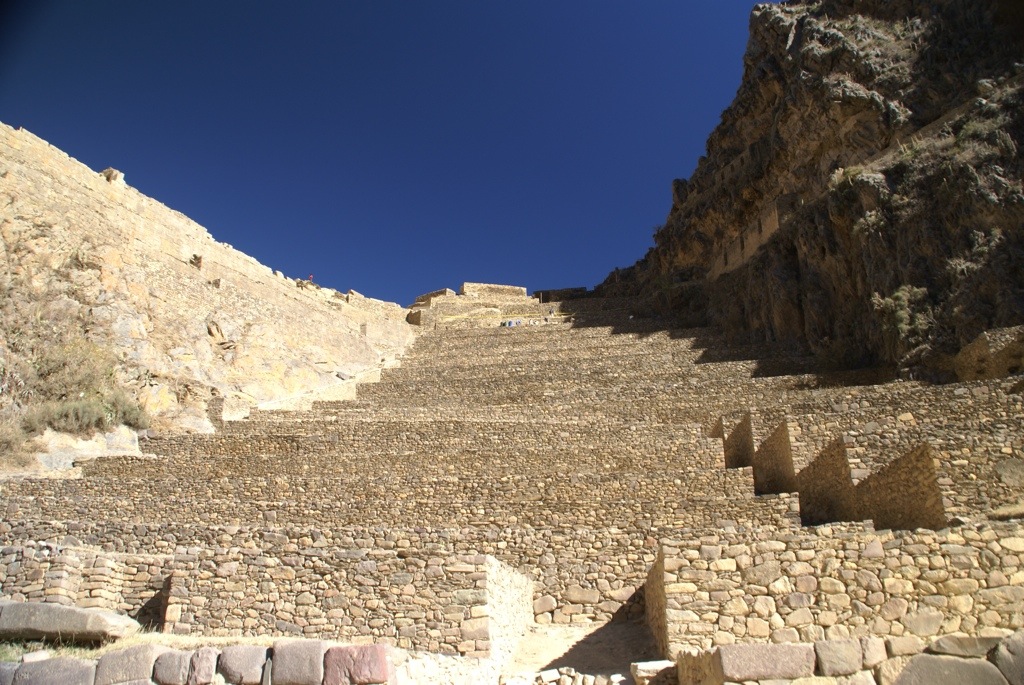
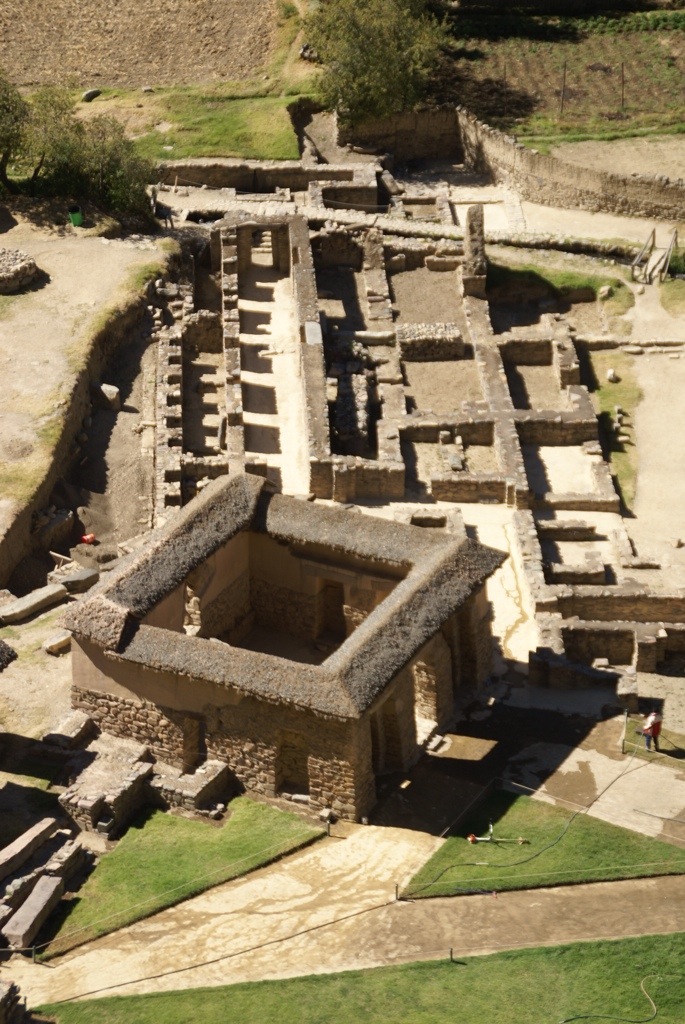
One of the reasons we had come to Ollantaytambo was that it was from there that we were catching the train to Machu Picchu. Machu Picchu has been declared one of the seven modern wonders of the world and as a result everyone wants to go and see it. Because of this and its location it's expensive to get to and also quite difficult especially if organising independently. Whilst there are a number of ways to do this it usually involves catching a train to Aguas Calientes, spending the night there, catching a bus up the mountain and then visiting the sight. As our time was short we decided to go this way even though it is the most expensive. There is a cheaper way where you can drive most of the way and then walk in but we did not really have the time.
Gilly and I had walked the Salkantay Trek to Machu Picchu 15 years ago. So we remembered Aguas Calientes as a ramshackle tourist trap at the end of the train line. It's still a tourist trap but it seems to have grown in size and gone up market in the intervening years since we last visited. Fortunately we did not need to stay long.
We were up at 5am the next morning, on the bus by 6am and on the terracing overlooking Machu Picchu as the sun came over the top of the mountains to light the whole site up. And it is an impressive sight. The ruins themselves are spectacular in their own right but the setting is what makes it magnificent. The ruins are set on a hill with steep sides flowing down to the river way below. Behind the ruins stands the impressive peak of Wayna Picchu.
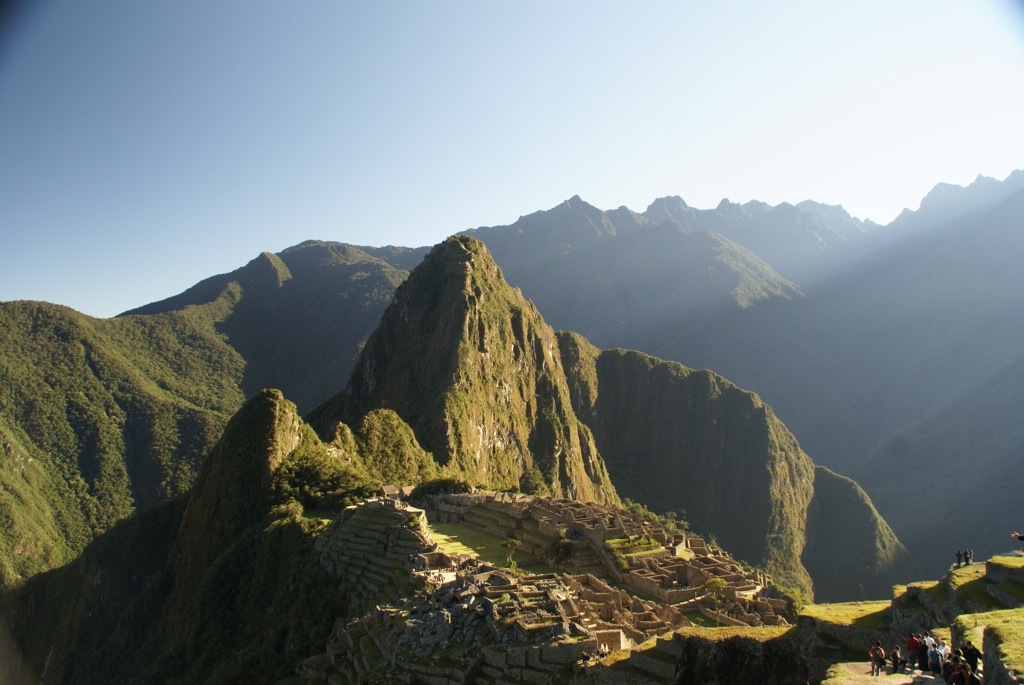
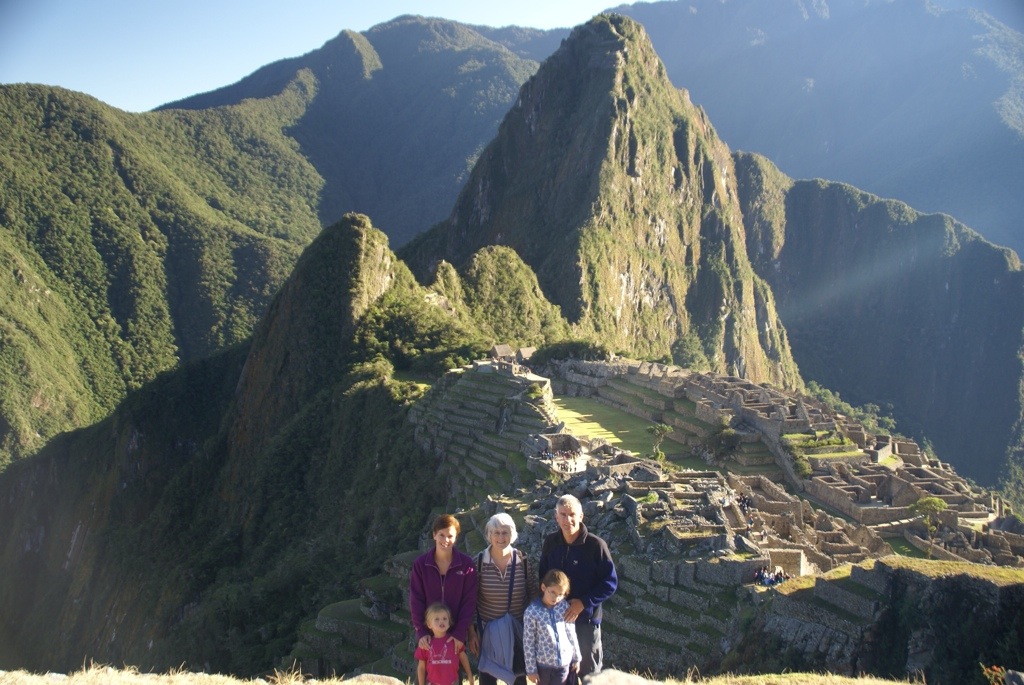
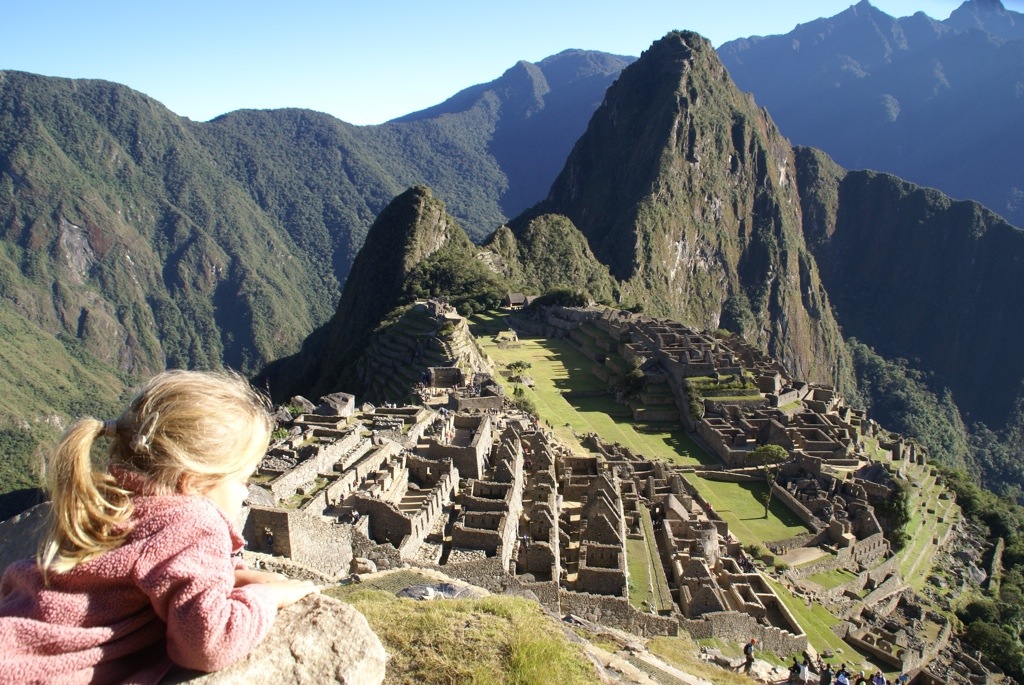
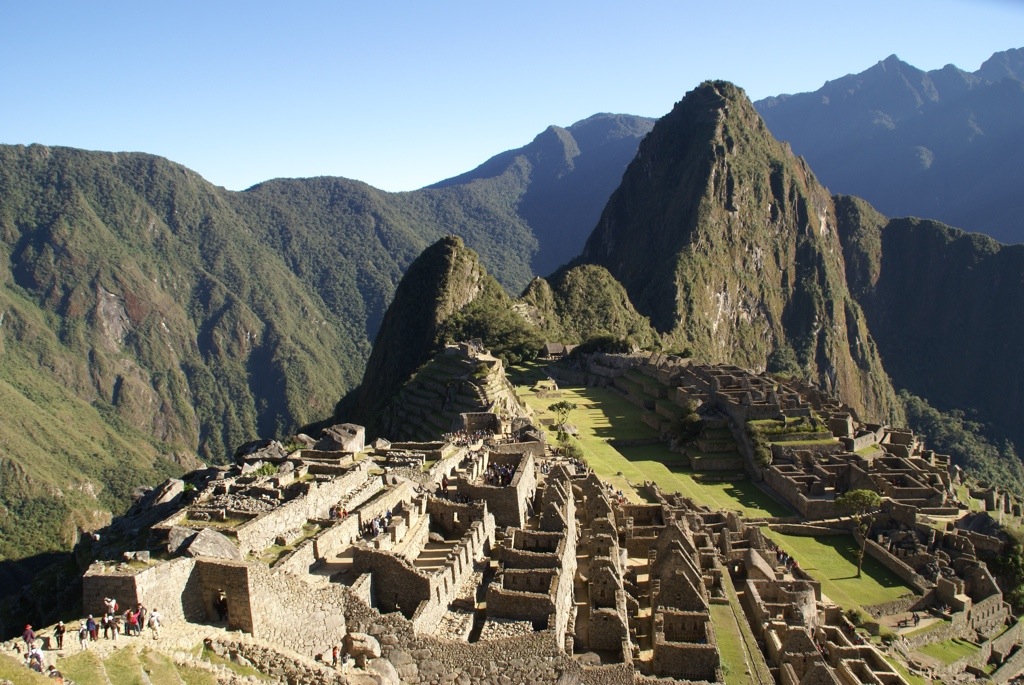
The city was built by the Incas as a ceremonial centre and was never discovered by the Spanish. It is also likely it was abandoned before it was fully finished.
We spent several hours exploring the site, seeing the famous temples such as the Temple of the Sun and the Condor Temple.
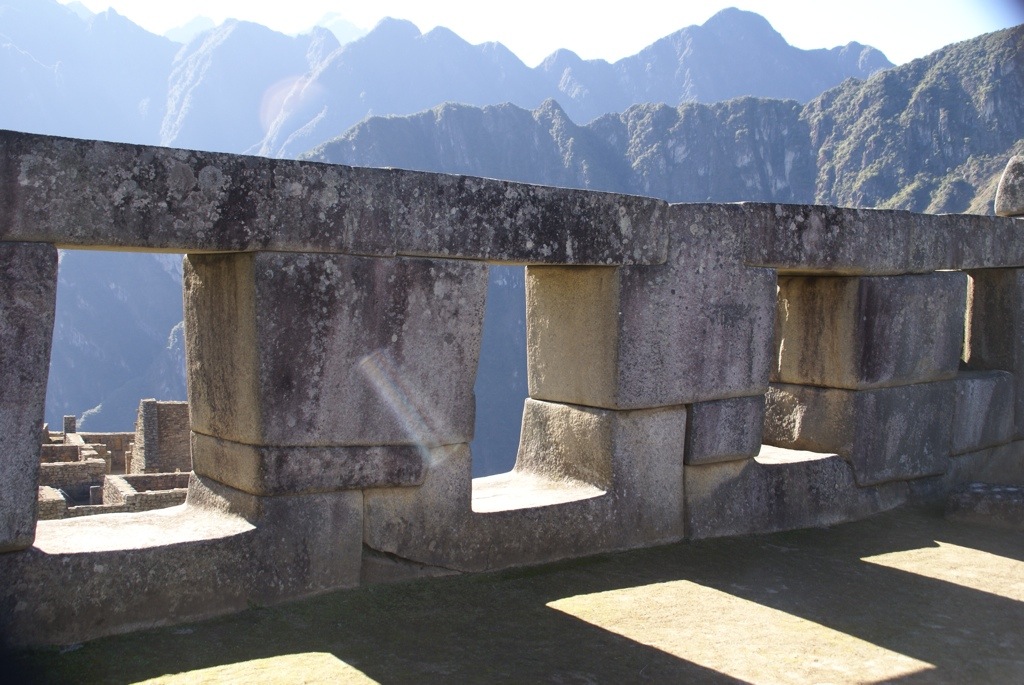
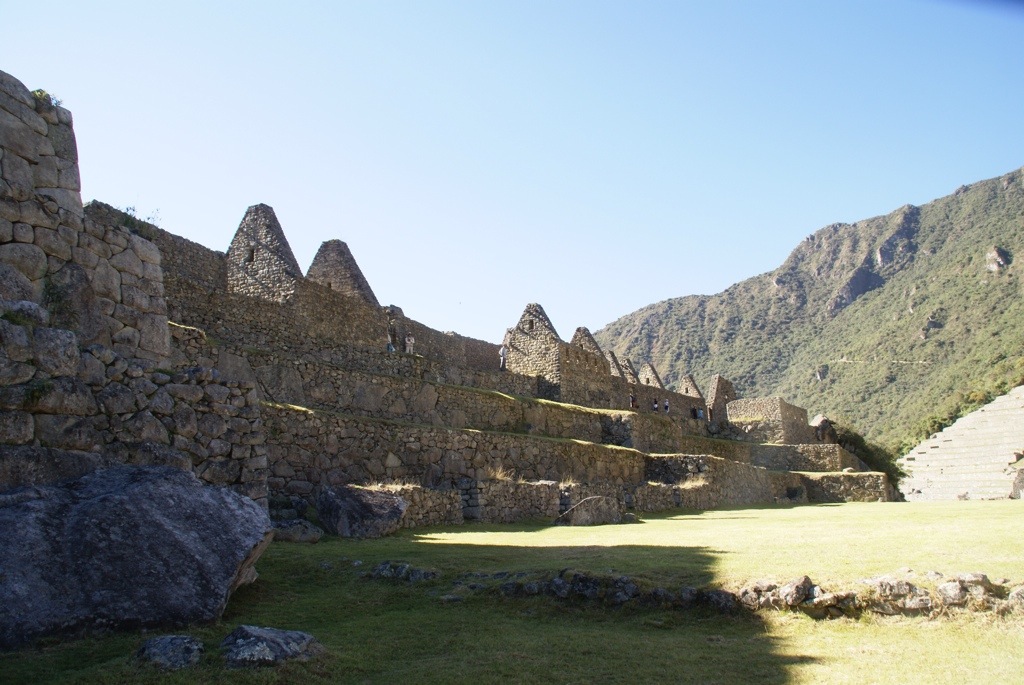

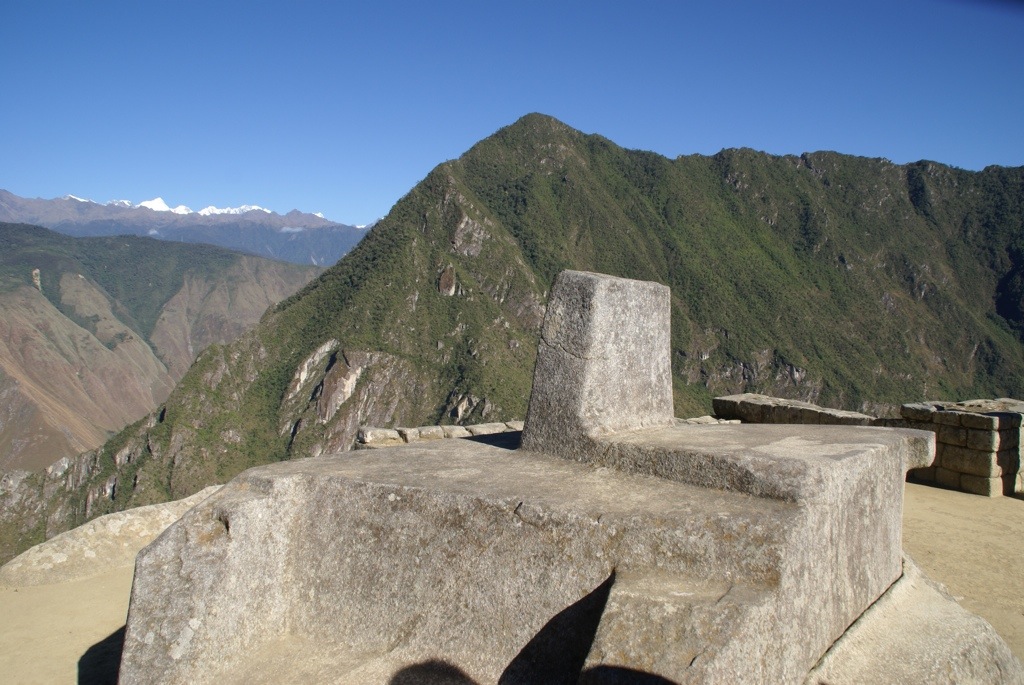
After about 3 hours Margaret kindly took Alisha and Lucy for a drink while Gilly and I hiked further up the mountain to the Inca drawbridge. This was further away from the site and the hordes of visitors and also allowed us impressive views down the valley.
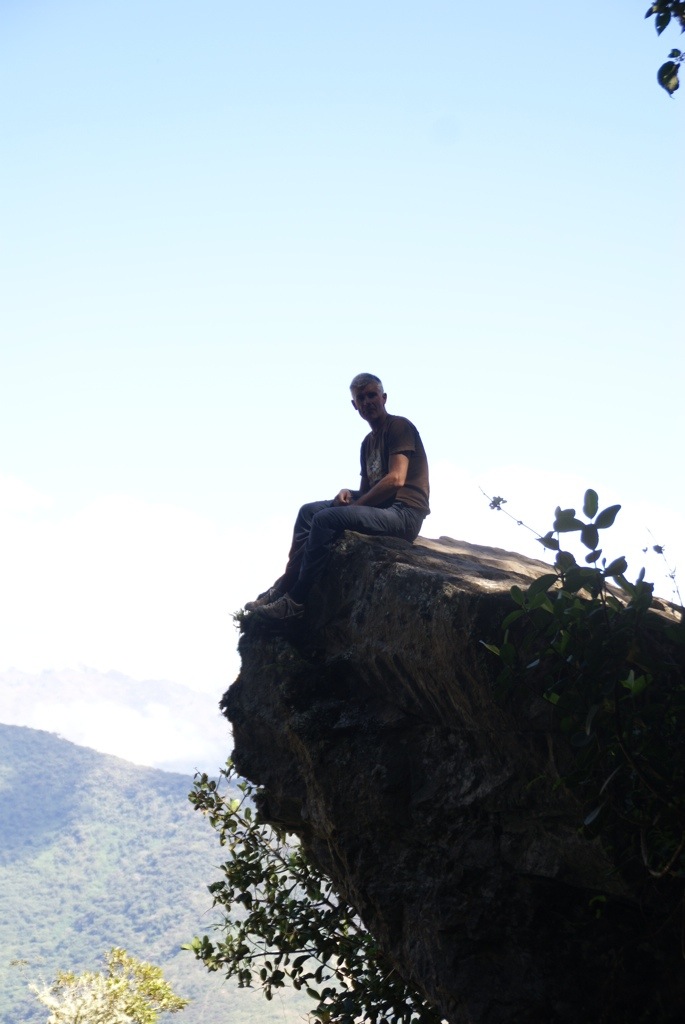
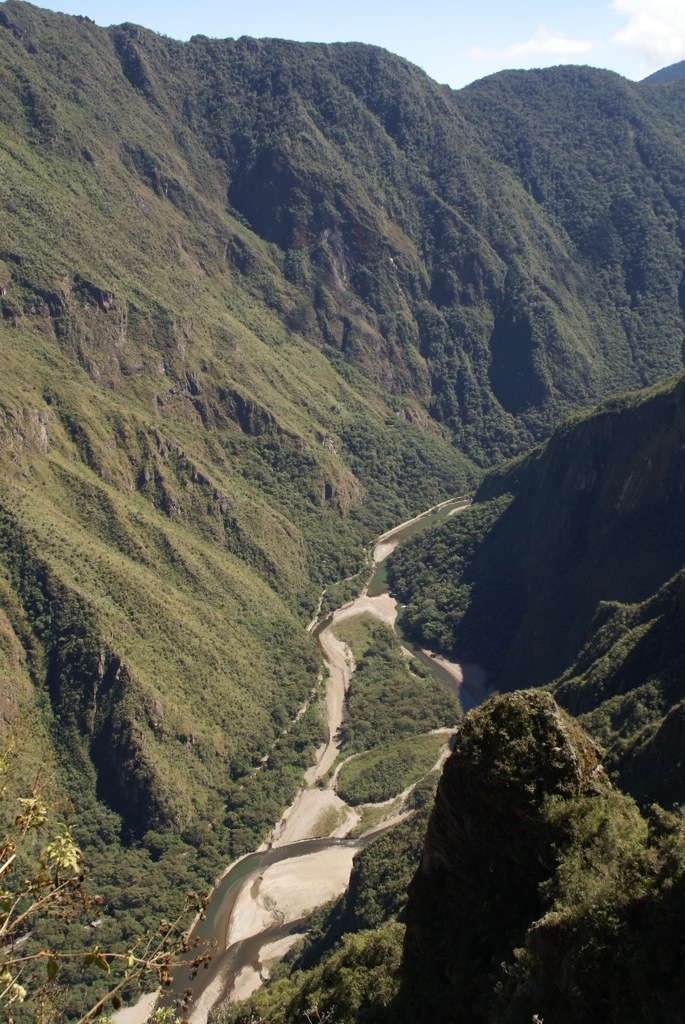
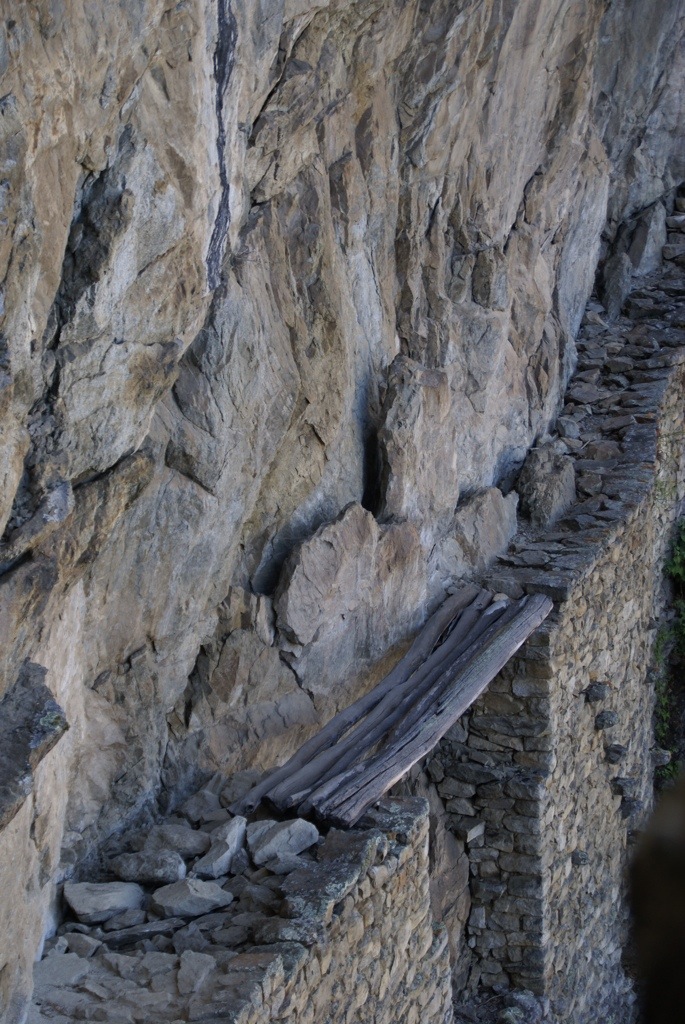
Machu Picchu certainly lives up to its billing and it is a truly impressive sight well worth the effort and cost of getting there. It is though very busy and as the day wore on we needed to squeeze past the multitude of tour groups to get around.

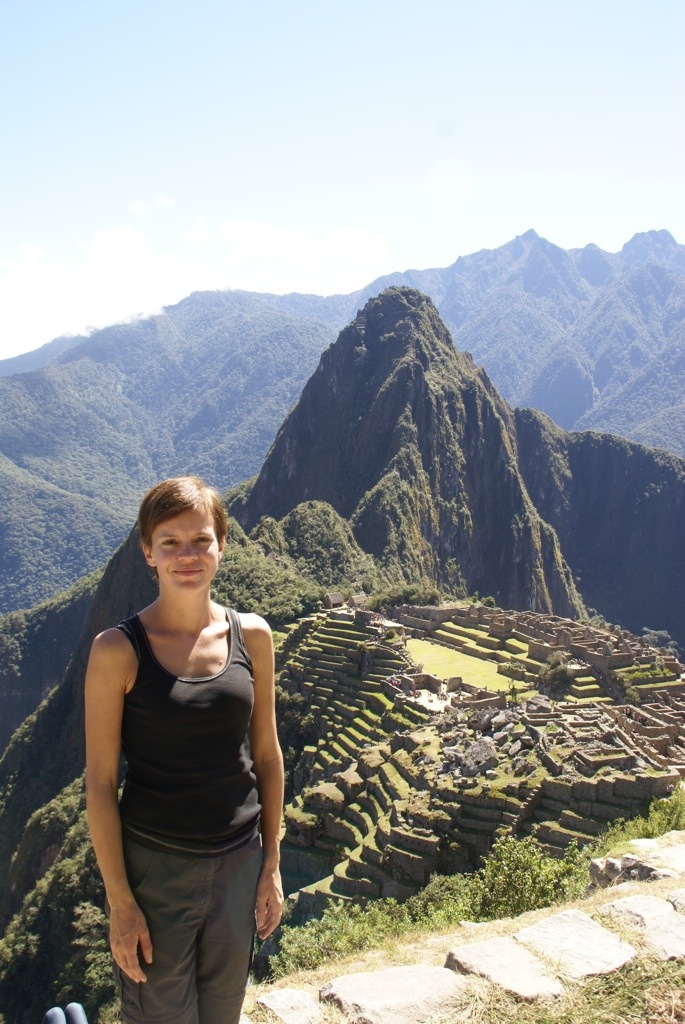
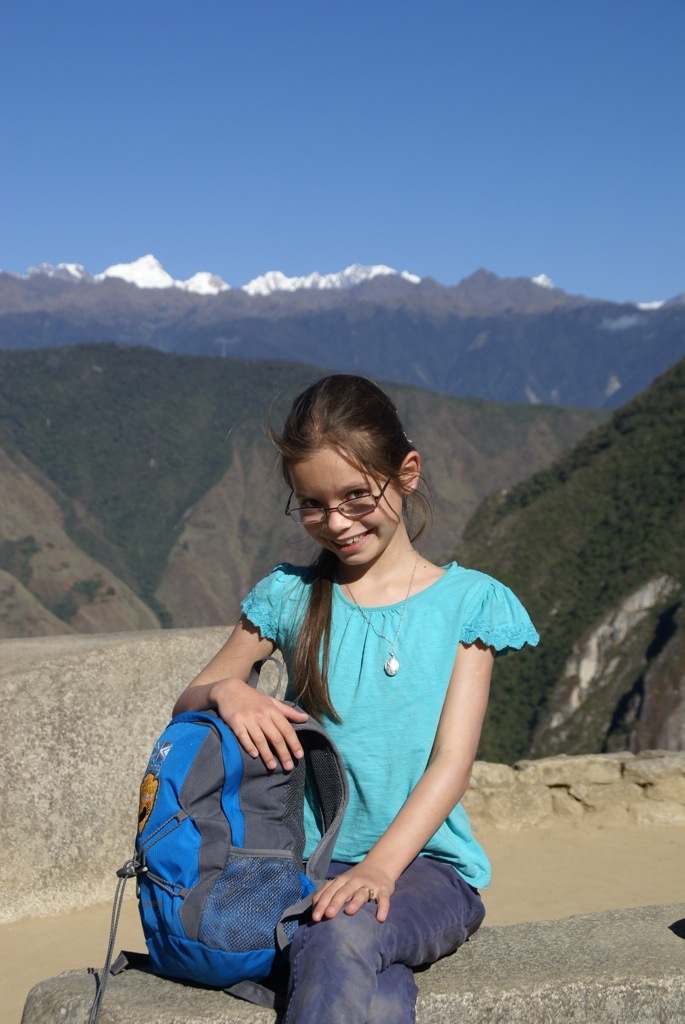
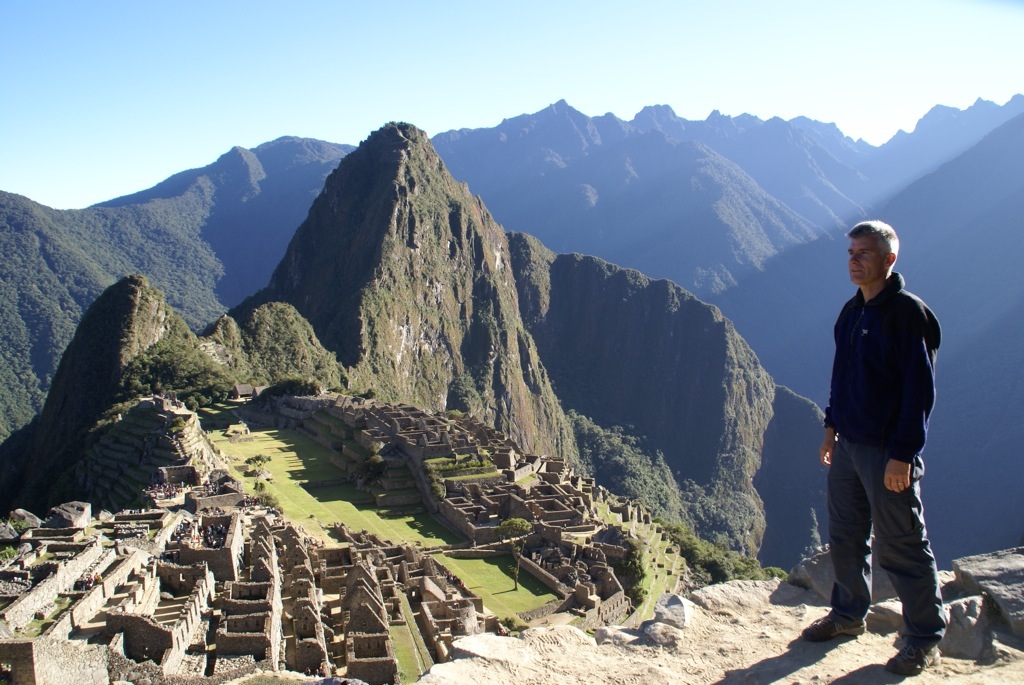
After grabbing lunch in Aguas Calientes we caught the train back to Ollantaytambo for an early night which everyone needed after the day out.
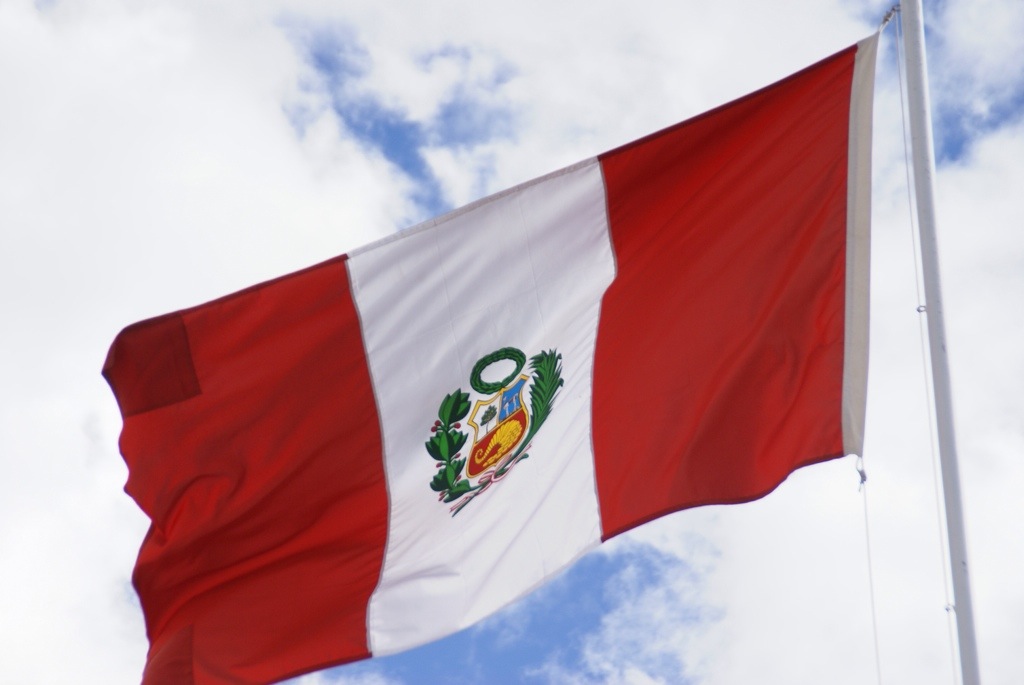 Lucy
Peru has dogs that do not have any hair. They also have Guinea Pigs in cages. I went to see the football with Daddy and in the bar they had a big castle of Guinea Pigs. I have also stroked an Alpaca.
Lucy
Peru has dogs that do not have any hair. They also have Guinea Pigs in cages. I went to see the football with Daddy and in the bar they had a big castle of Guinea Pigs. I have also stroked an Alpaca.
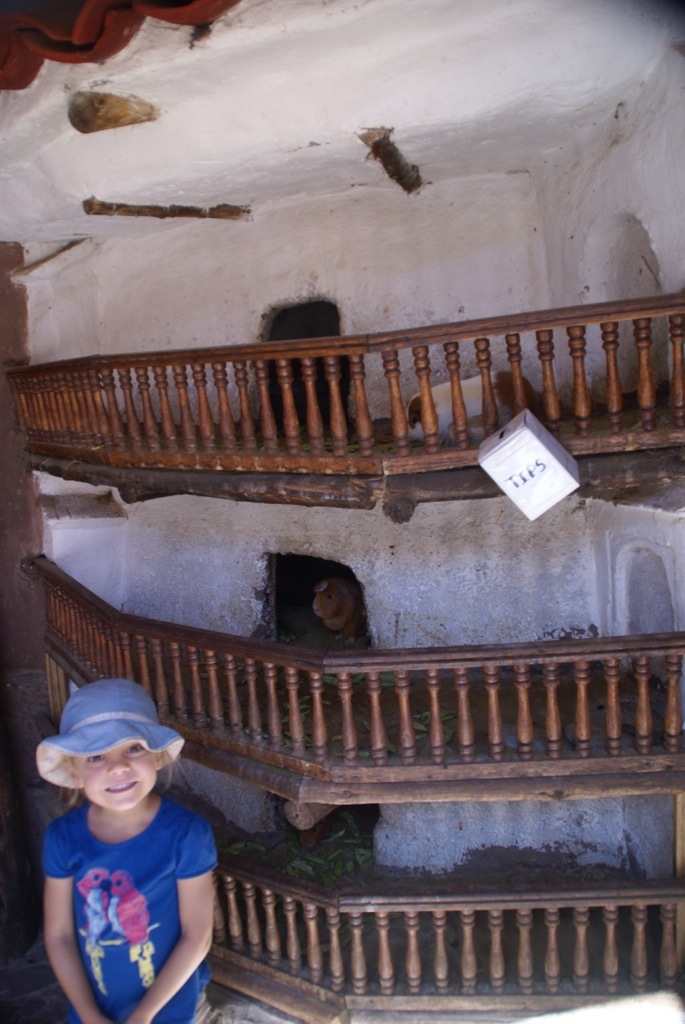
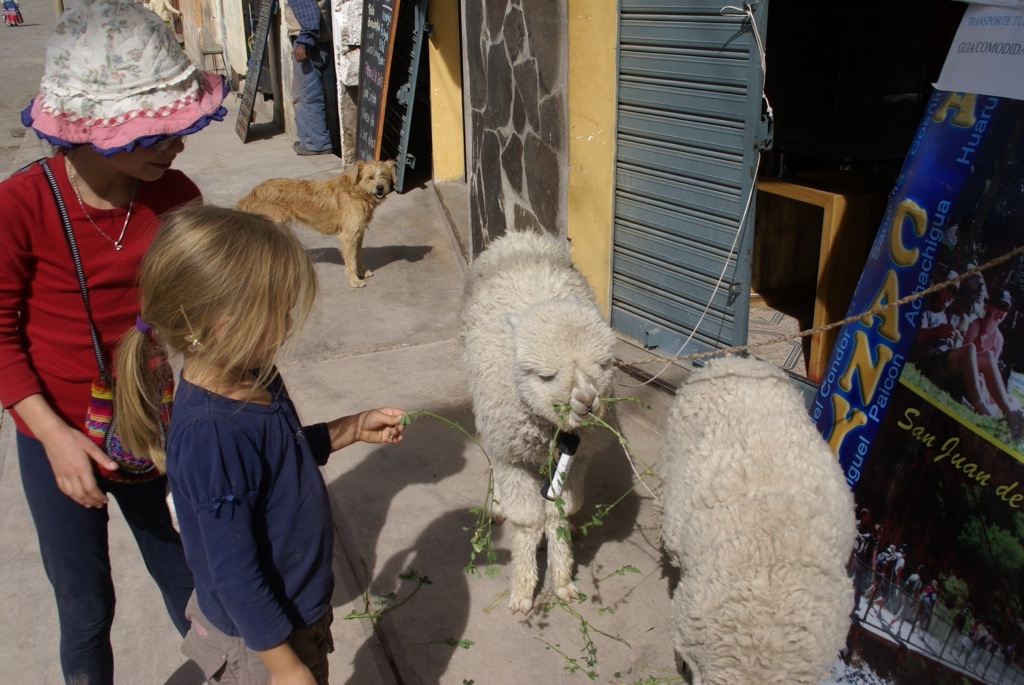 One day we were crossing the high mountains with my Aunty Clare and we even passed snow on the side of the road but I did not see it all as I was sleeping in the truck.
I have enjoyed having my Aunty Clare and Grannie come to stay with us. They have been telling me stories about a little bat called Barnaby.
One day we were crossing the high mountains with my Aunty Clare and we even passed snow on the side of the road but I did not see it all as I was sleeping in the truck.
I have enjoyed having my Aunty Clare and Grannie come to stay with us. They have been telling me stories about a little bat called Barnaby.
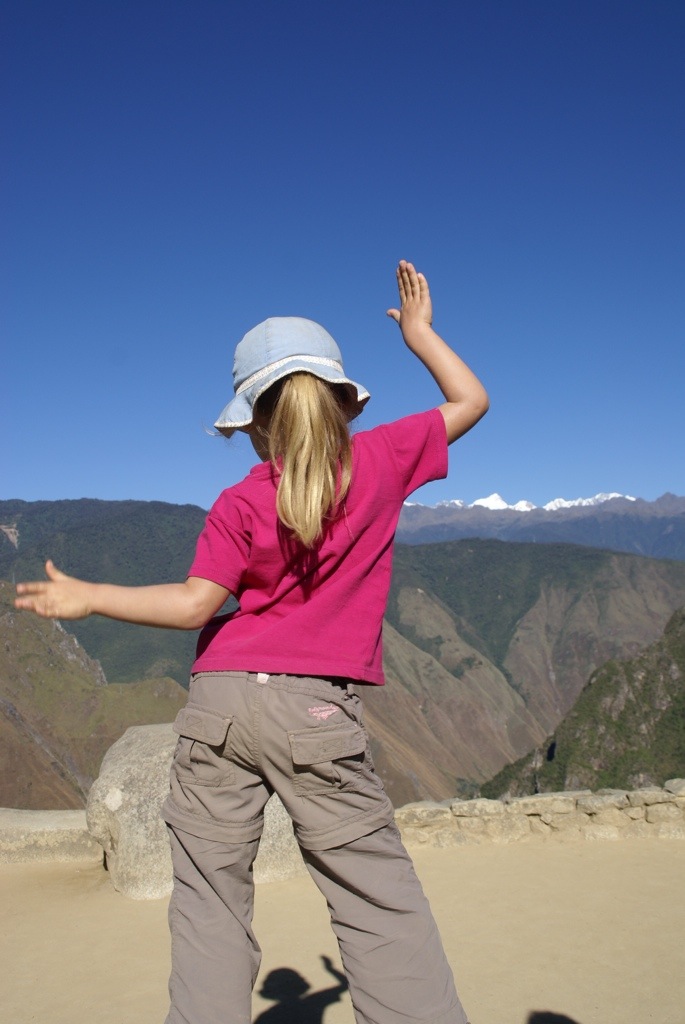 Alisha
After reading "Incredible Incas" I understood more about Incas than I did before. For instance did you know that they drowned their criminals in Lake Titicaca. That the Inca kings were called "The Inca". One of the Inca loved sea fish so much that he got it fresh everyday, brought by messengers from the coast about 500kms away. If the fish was not fresh the Inca had the messengers executed, that's a bit harsh isn't it!
Have you heard of the ice maiden Juanita? She was sacrificed by the incas on top of a mountain, to say thank you to the gods. She was chosen at birth to be sacrificed and kept in the temple, until 14 when she was sacrificed. She was a bit frightened but in some ways she was a bit proud, as she thought she was going to live with the gods or in someways be a god herself.
I've been working hard making a blue dress, when it was finished I went to Sacsaywaman ruins in it and was pretending to be an Inca princess. Lucy wanted to be my servant.
Alisha
After reading "Incredible Incas" I understood more about Incas than I did before. For instance did you know that they drowned their criminals in Lake Titicaca. That the Inca kings were called "The Inca". One of the Inca loved sea fish so much that he got it fresh everyday, brought by messengers from the coast about 500kms away. If the fish was not fresh the Inca had the messengers executed, that's a bit harsh isn't it!
Have you heard of the ice maiden Juanita? She was sacrificed by the incas on top of a mountain, to say thank you to the gods. She was chosen at birth to be sacrificed and kept in the temple, until 14 when she was sacrificed. She was a bit frightened but in some ways she was a bit proud, as she thought she was going to live with the gods or in someways be a god herself.
I've been working hard making a blue dress, when it was finished I went to Sacsaywaman ruins in it and was pretending to be an Inca princess. Lucy wanted to be my servant.
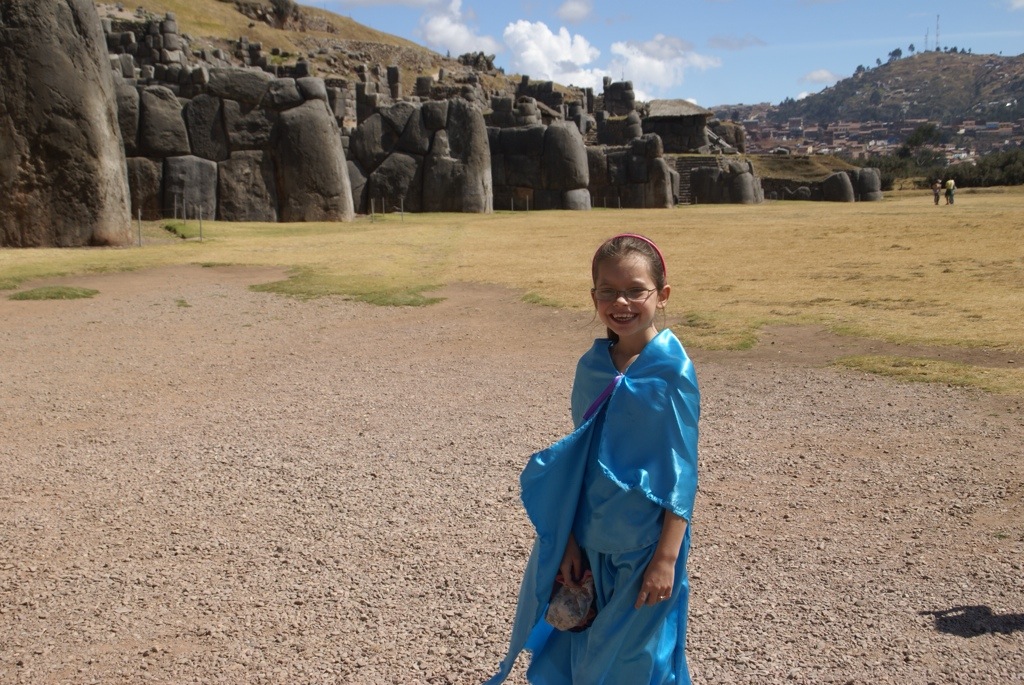
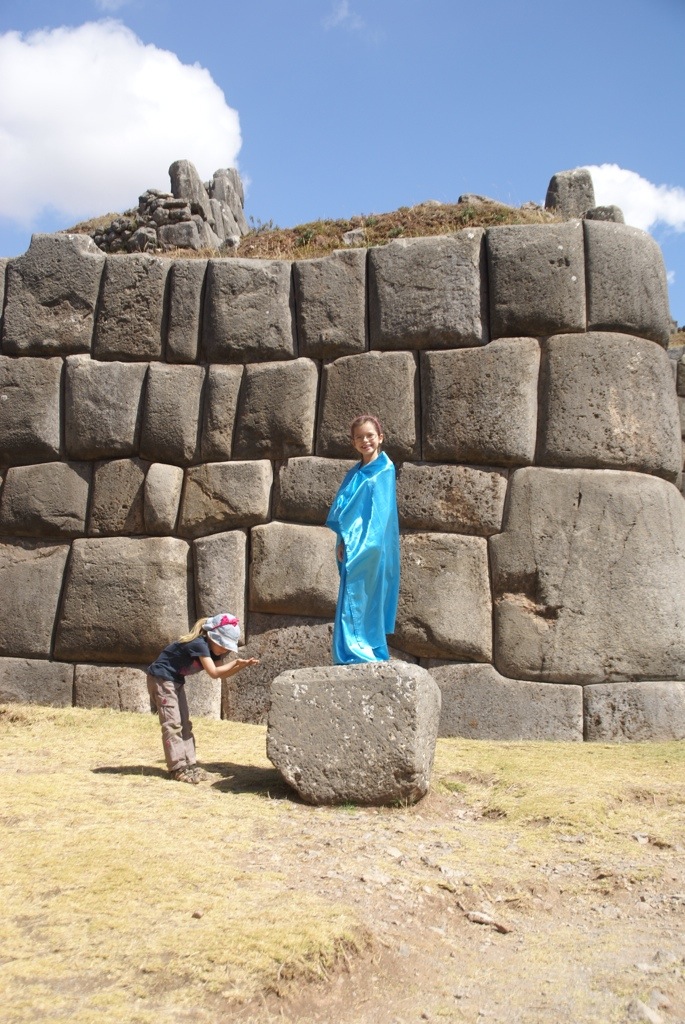
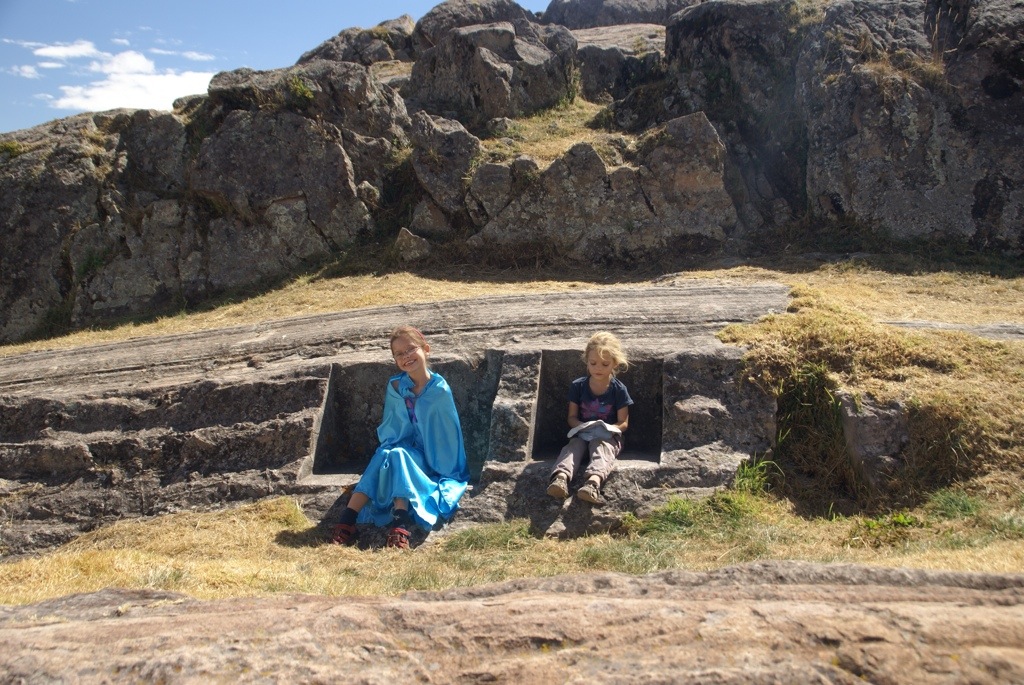 Gilly
We've loved the 5 weeks we've been in Peru. From sandy deserts, desolate coasts, high snow-capped mountains, indigenous villages, ancient civilisations and colonial towns we have seen a lot. Not forgetting that about a third of the country is jungle, we haven't even touched on that. We'd been warned that Peru was quite touristy before we arrived but here is a reason for that: there is so much to do. In fact we found that is was only around Cusco and Lake Titicaca that places were really busy, we are here in peak season though.
My favourite area was the Cordillera Blanca, the mountains were stunning with lots of interesting places to hike and sleep. I would happily return there again and again.
Gilly
We've loved the 5 weeks we've been in Peru. From sandy deserts, desolate coasts, high snow-capped mountains, indigenous villages, ancient civilisations and colonial towns we have seen a lot. Not forgetting that about a third of the country is jungle, we haven't even touched on that. We'd been warned that Peru was quite touristy before we arrived but here is a reason for that: there is so much to do. In fact we found that is was only around Cusco and Lake Titicaca that places were really busy, we are here in peak season though.
My favourite area was the Cordillera Blanca, the mountains were stunning with lots of interesting places to hike and sleep. I would happily return there again and again.
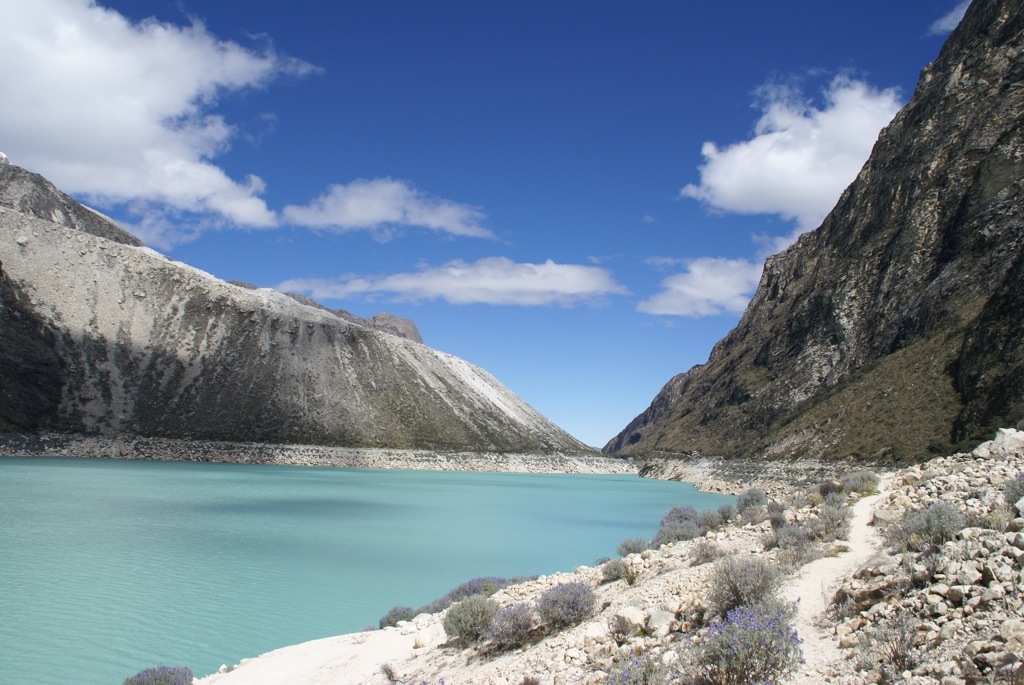 I may be proved wrong at a later date but so far, Peru has had the worst drivers we've come across. A lot of horn blowing, posturing and bullying goes on, on the roads. Often the size of vehicle is no factor in the driver's desire to be the first or fastest. There is a car here that looks a bit like how I draw a car (a square on top of a rectangle) and looks like it is made out of cardboard. The make is popularly used as a taxi. Having been in several I can also confirm that my old vacuum cleaner had more horsepower. However these cars are the ones doing all the pushing and shoving at junctions and busy roads, angling themselves so they can just squeeze past us. The fact that the truck would easily squash them without hardly a bump, if Steve didn't notice their last second manoeuvring, doesn't seem to stop them. Luckily for us though the drivers on the extreme mountains roads, like the amazing Canon del Pato, seem to have more sense.
I've also loved having my Mum and sister Clare visit us in Peru. It has been wonderful to spend time with them and I am very thankful they came all this way to see us. I think the girls will be very bored to have just mummy and daddy around once we say goodbye to my Mum in La Paz.
I may be proved wrong at a later date but so far, Peru has had the worst drivers we've come across. A lot of horn blowing, posturing and bullying goes on, on the roads. Often the size of vehicle is no factor in the driver's desire to be the first or fastest. There is a car here that looks a bit like how I draw a car (a square on top of a rectangle) and looks like it is made out of cardboard. The make is popularly used as a taxi. Having been in several I can also confirm that my old vacuum cleaner had more horsepower. However these cars are the ones doing all the pushing and shoving at junctions and busy roads, angling themselves so they can just squeeze past us. The fact that the truck would easily squash them without hardly a bump, if Steve didn't notice their last second manoeuvring, doesn't seem to stop them. Luckily for us though the drivers on the extreme mountains roads, like the amazing Canon del Pato, seem to have more sense.
I've also loved having my Mum and sister Clare visit us in Peru. It has been wonderful to spend time with them and I am very thankful they came all this way to see us. I think the girls will be very bored to have just mummy and daddy around once we say goodbye to my Mum in La Paz.
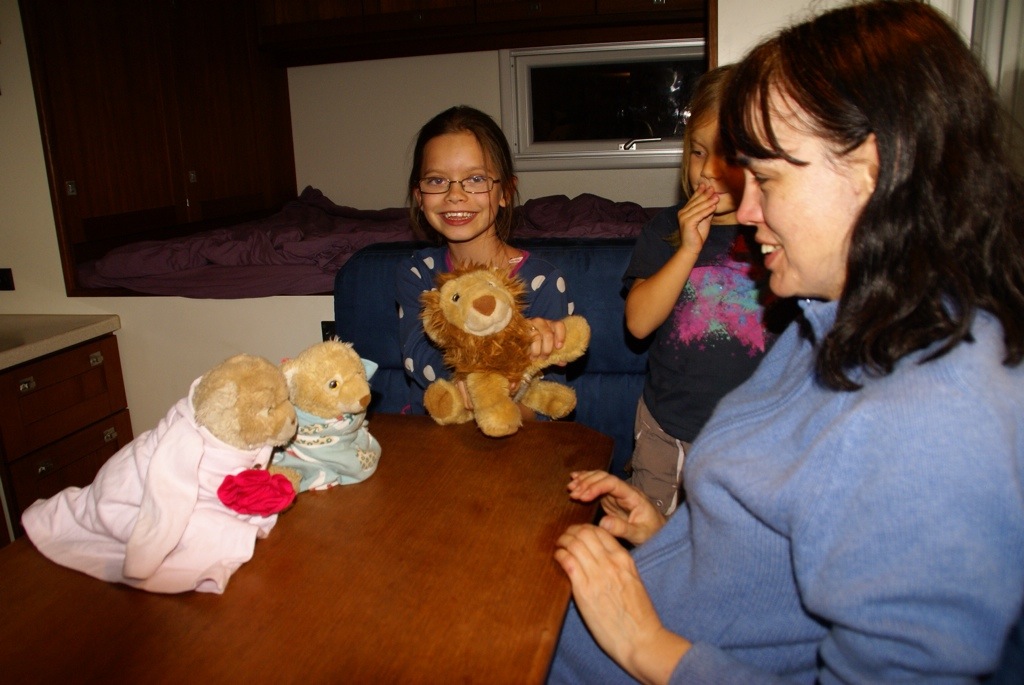
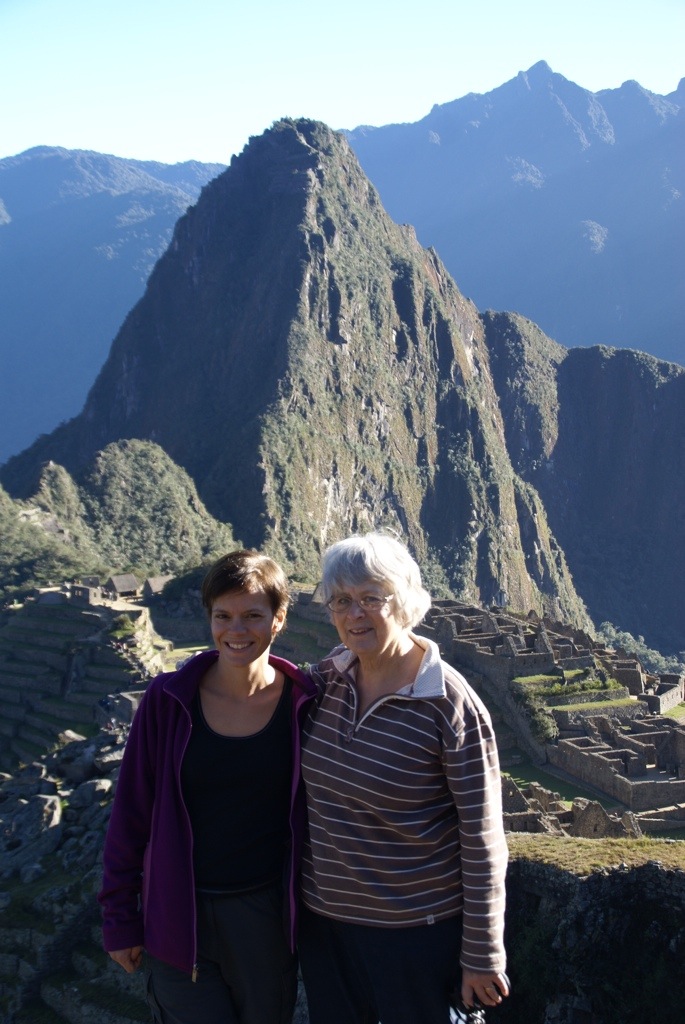 Steve
We were not sure what to expect with Peru. We had visited 15 years ago on holiday and thoroughly enjoyed it but some overlanders had described it as too touristy, expensive, unfriendly and therefore not enjoyed it. Well I have to say I have thoroughly enjoyed it. We have seen the deserts along the coast, the beautiful mountains and many of the Inca ruins in our 5 weeks here.
Yes in parts it has been touristy and with us having family visiting we have also done the tourist things. However it has also been possible to get off the beaten track. I have absolutely loved the mountains and with the great weather we have had we have been able to thoroughly enjoy the views. We have also done some epic drives in Peru. The Canon del Pato and the drive over the passes in the Cordillera Blanca are just two that stand out.
Steve
We were not sure what to expect with Peru. We had visited 15 years ago on holiday and thoroughly enjoyed it but some overlanders had described it as too touristy, expensive, unfriendly and therefore not enjoyed it. Well I have to say I have thoroughly enjoyed it. We have seen the deserts along the coast, the beautiful mountains and many of the Inca ruins in our 5 weeks here.
Yes in parts it has been touristy and with us having family visiting we have also done the tourist things. However it has also been possible to get off the beaten track. I have absolutely loved the mountains and with the great weather we have had we have been able to thoroughly enjoy the views. We have also done some epic drives in Peru. The Canon del Pato and the drive over the passes in the Cordillera Blanca are just two that stand out.
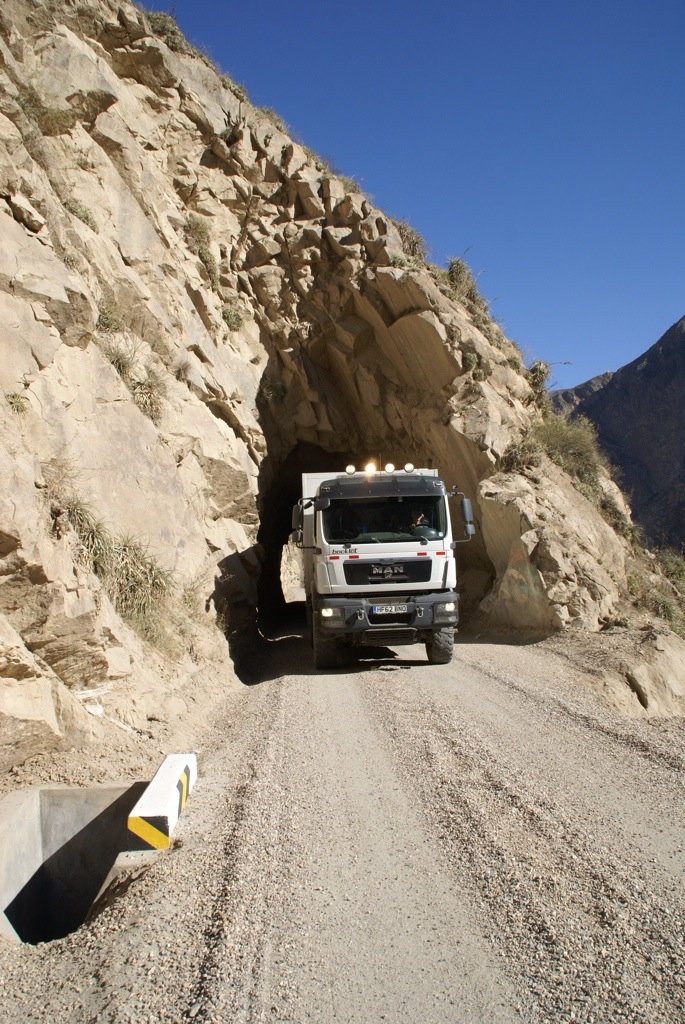
 Peru is also famous for its cuisine and it has definitely lived up to expectations. It's the best food we have had since Mexico. We have even been cooking some (Lomo Saltado) of it ourselves. I have also taken a great liking to Alpaca although I can not say the same for Guinea Pig.
Peru is also famous for its cuisine and it has definitely lived up to expectations. It's the best food we have had since Mexico. We have even been cooking some (Lomo Saltado) of it ourselves. I have also taken a great liking to Alpaca although I can not say the same for Guinea Pig.
